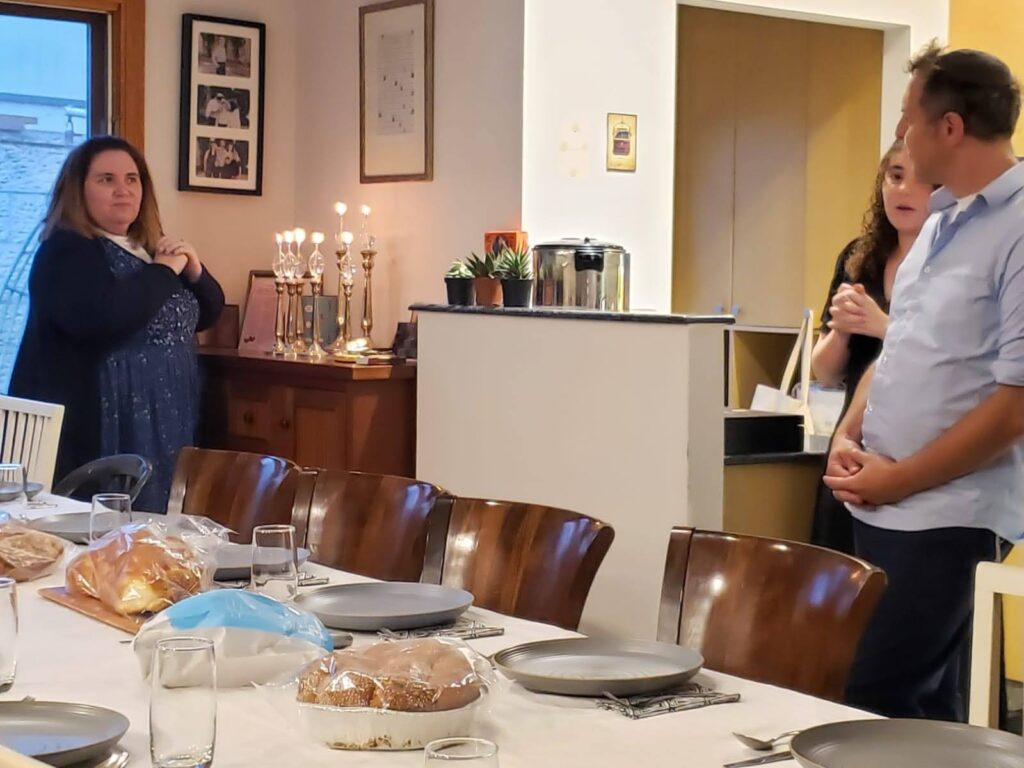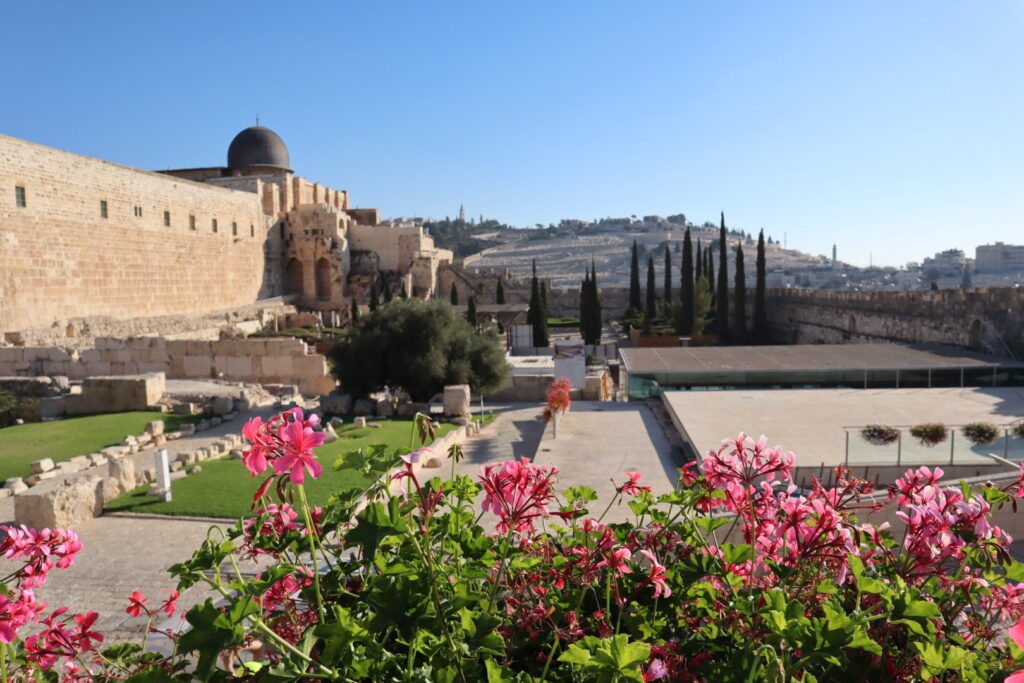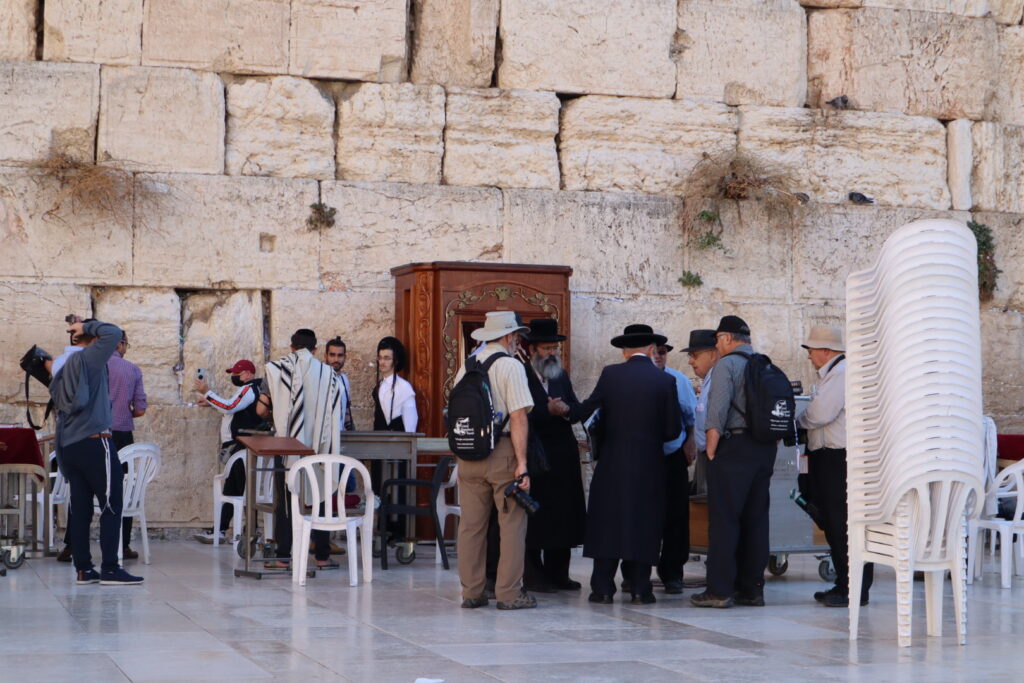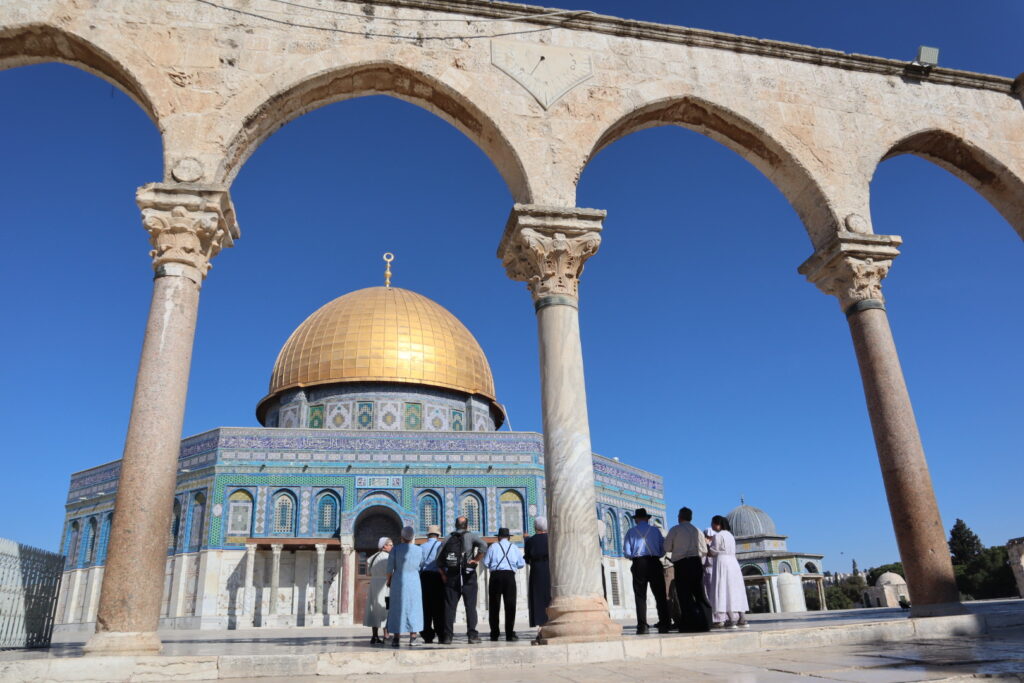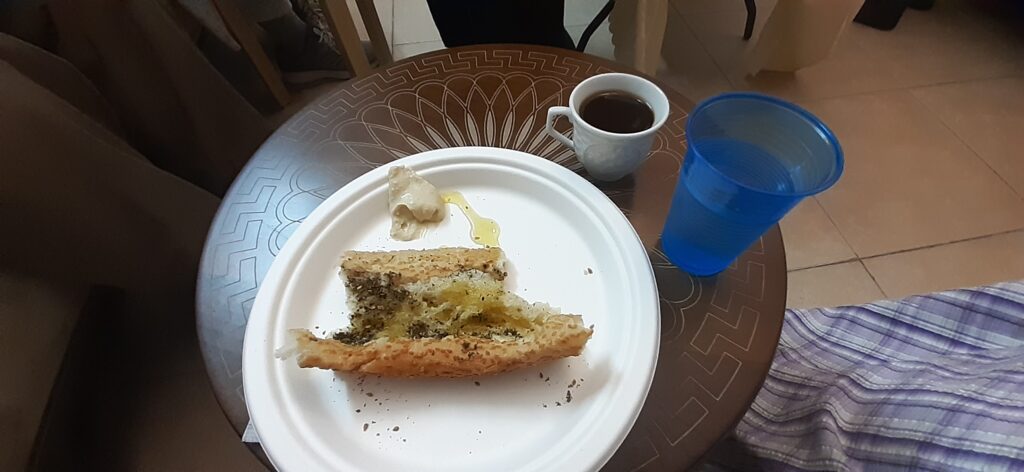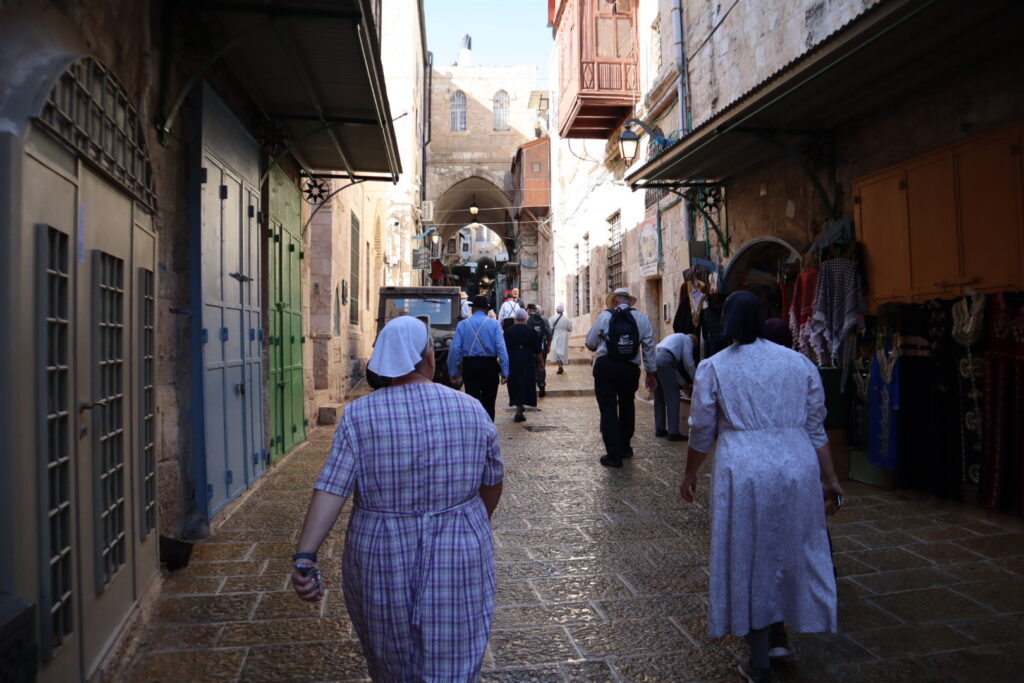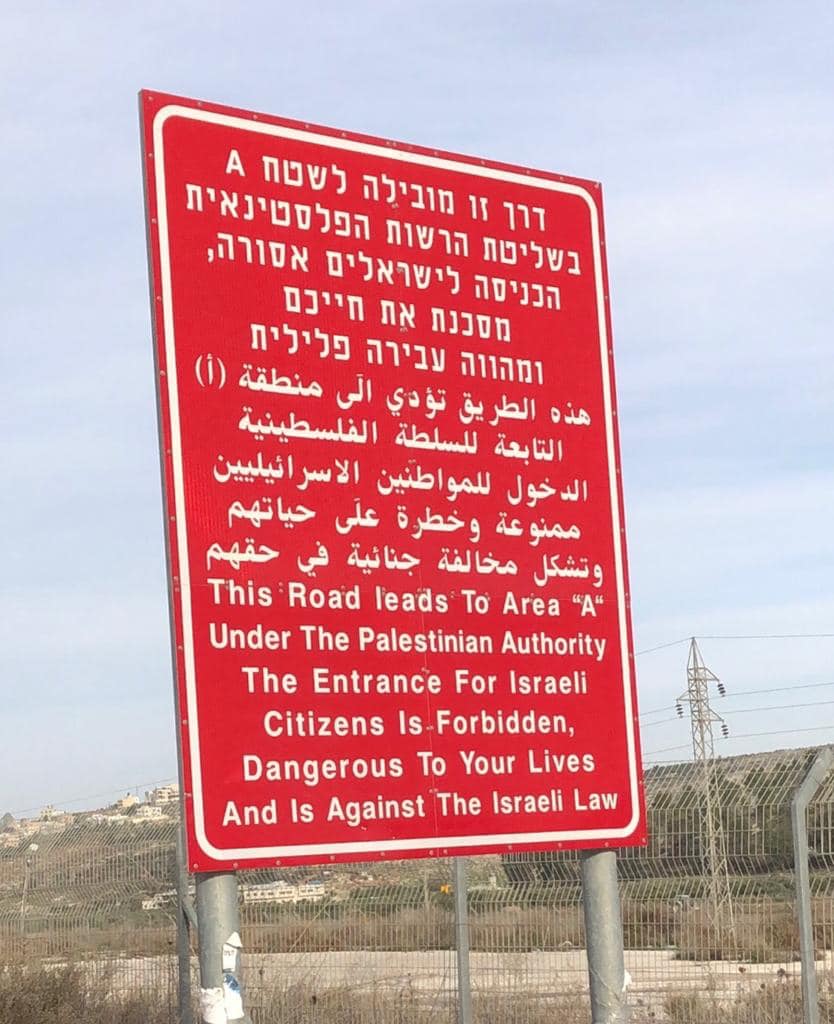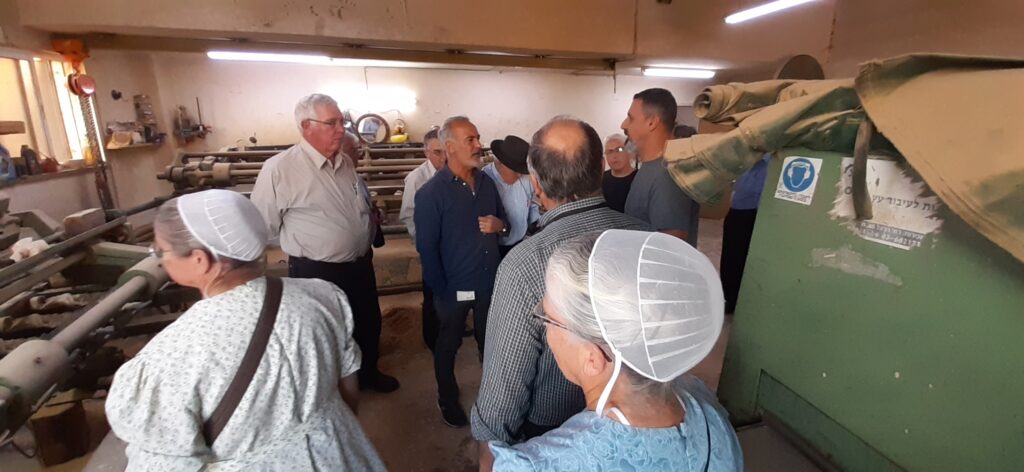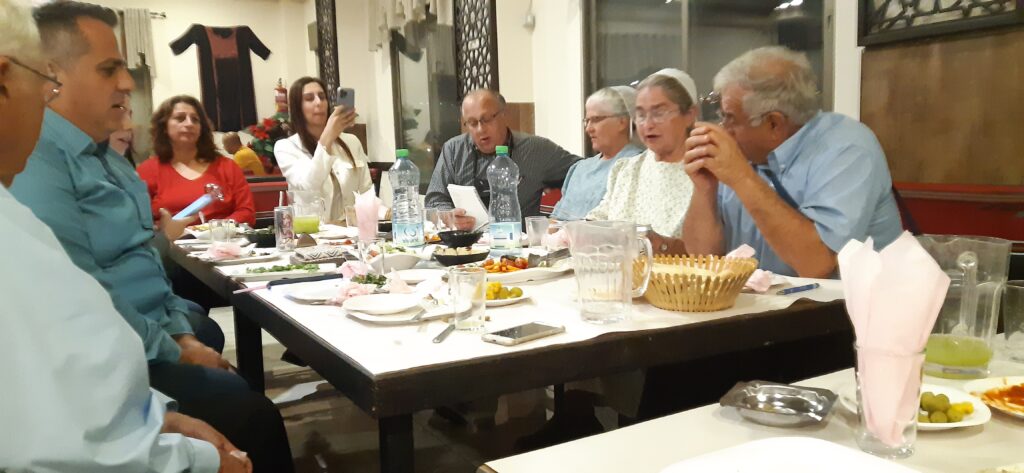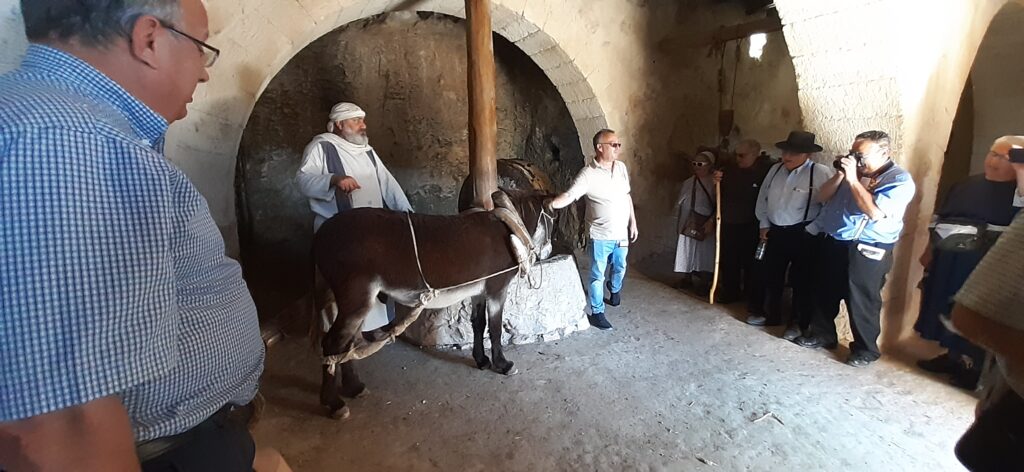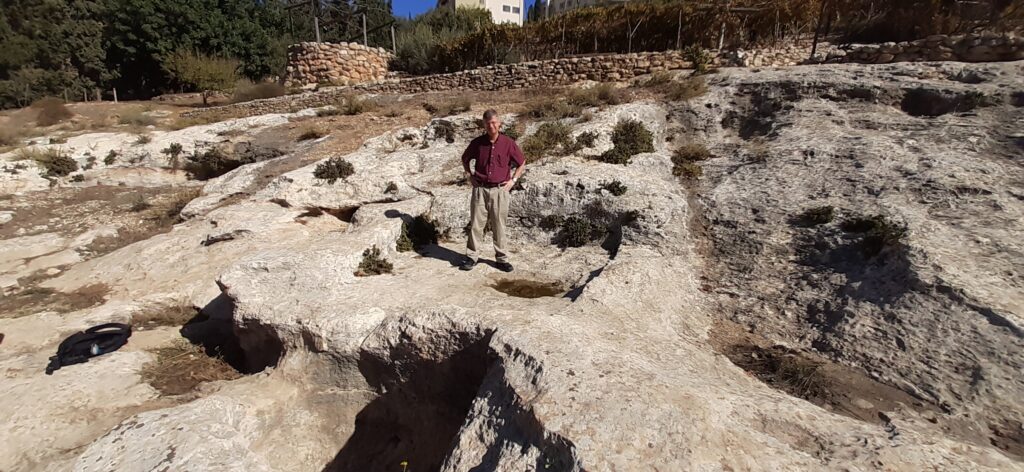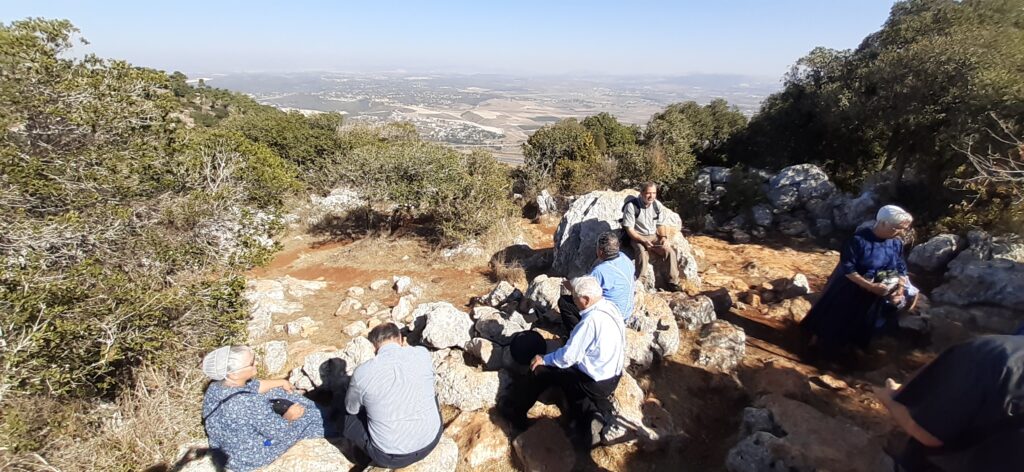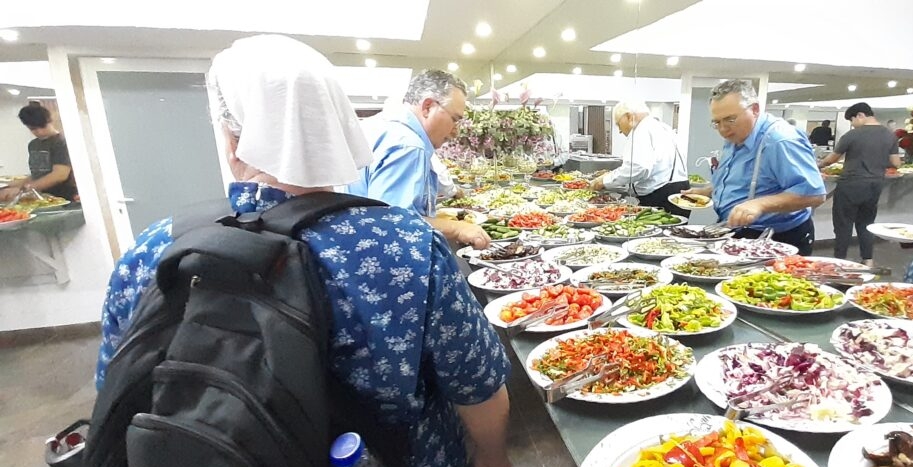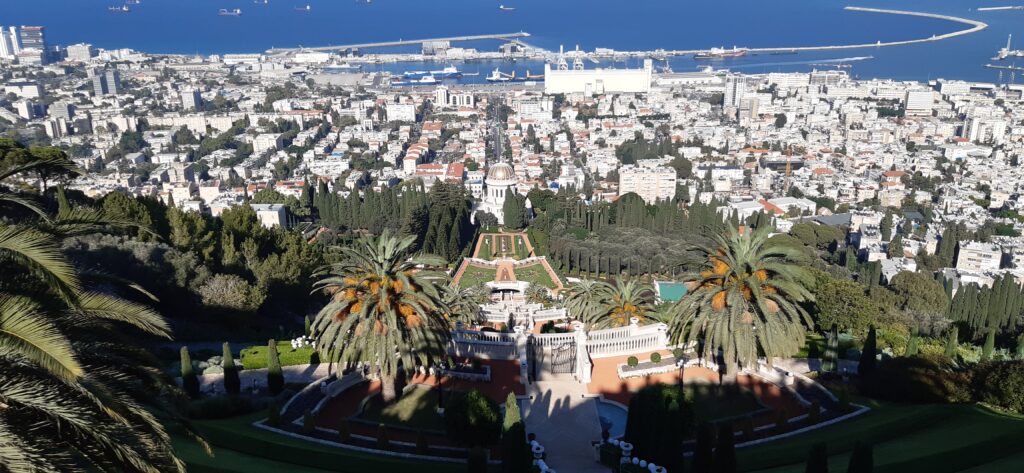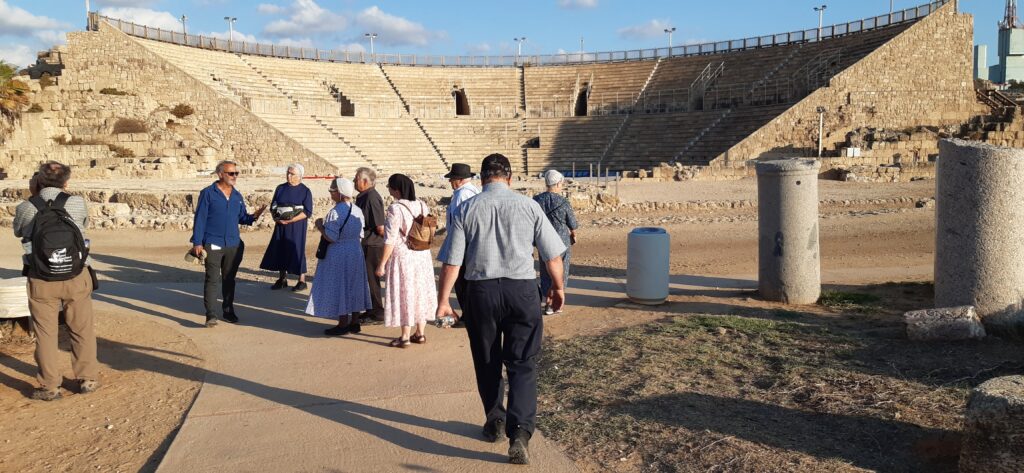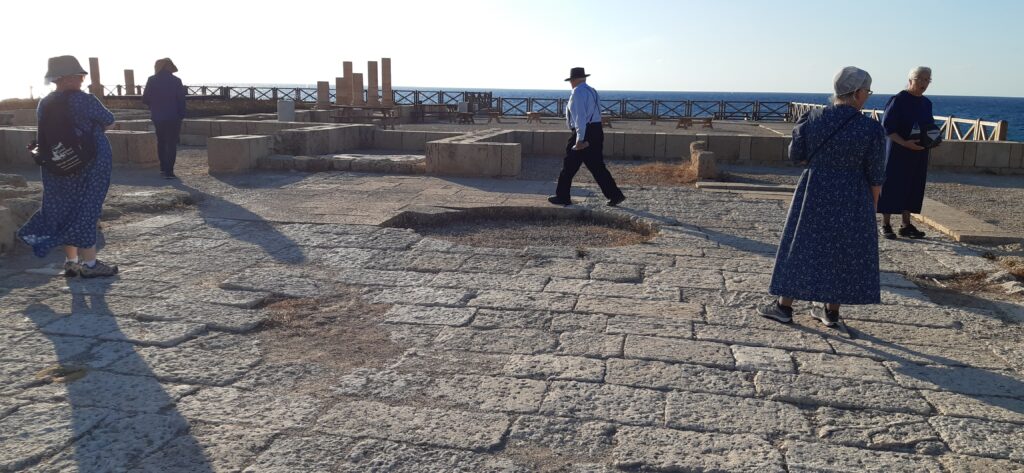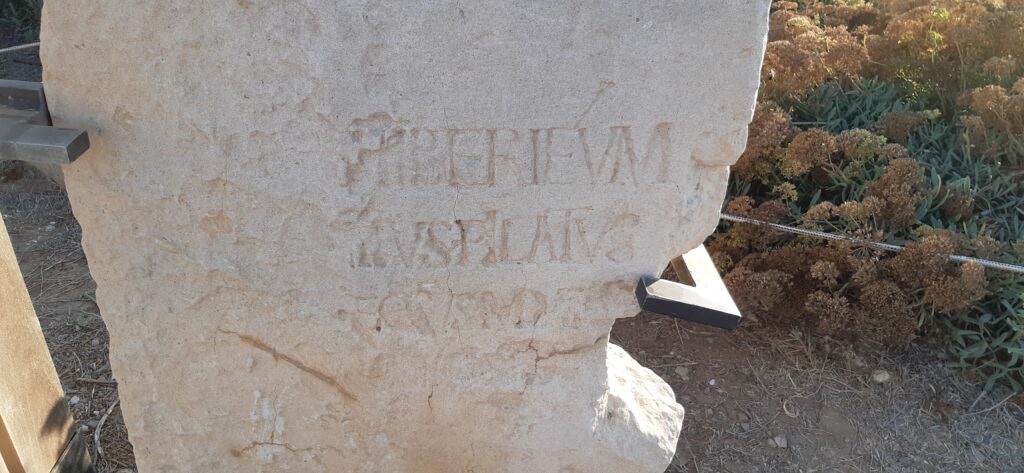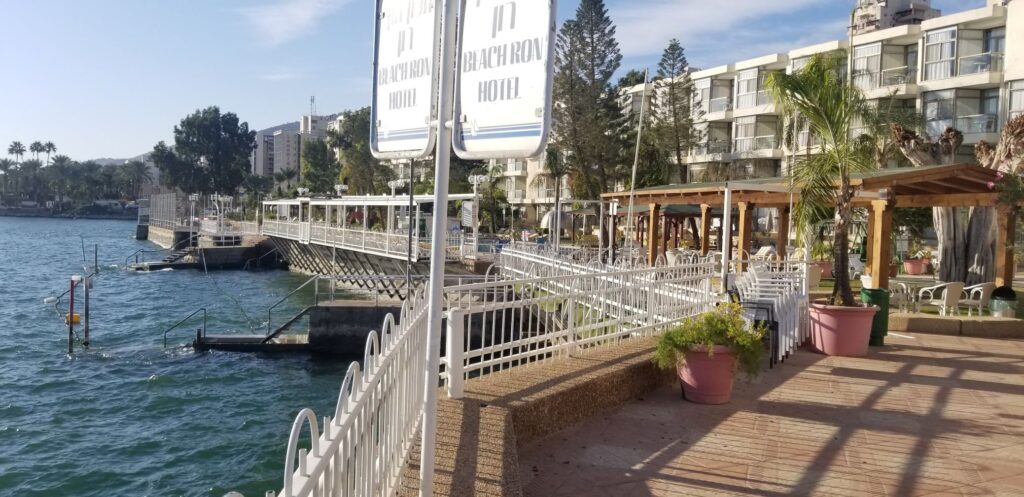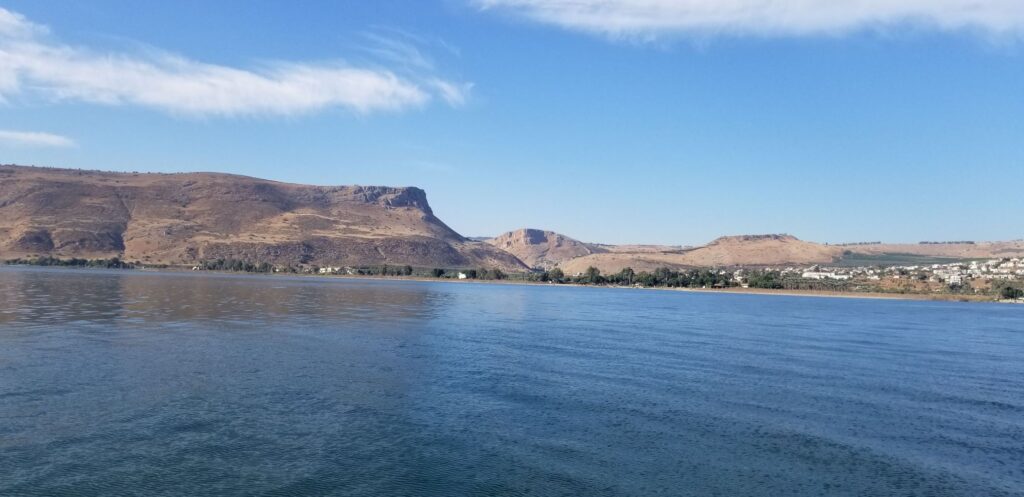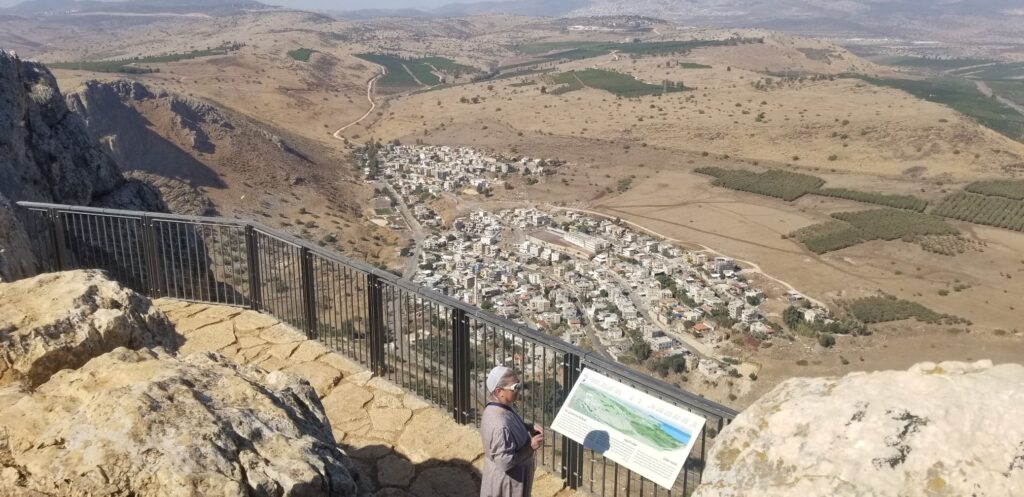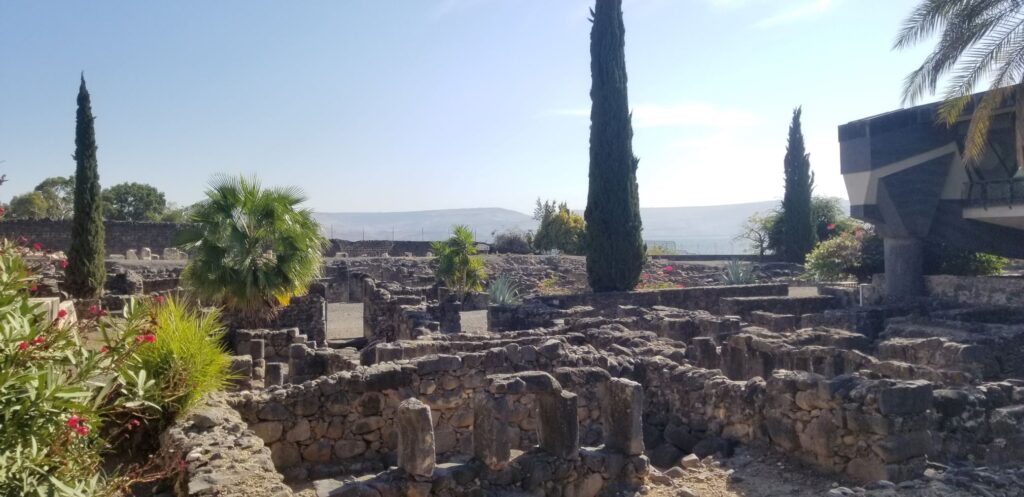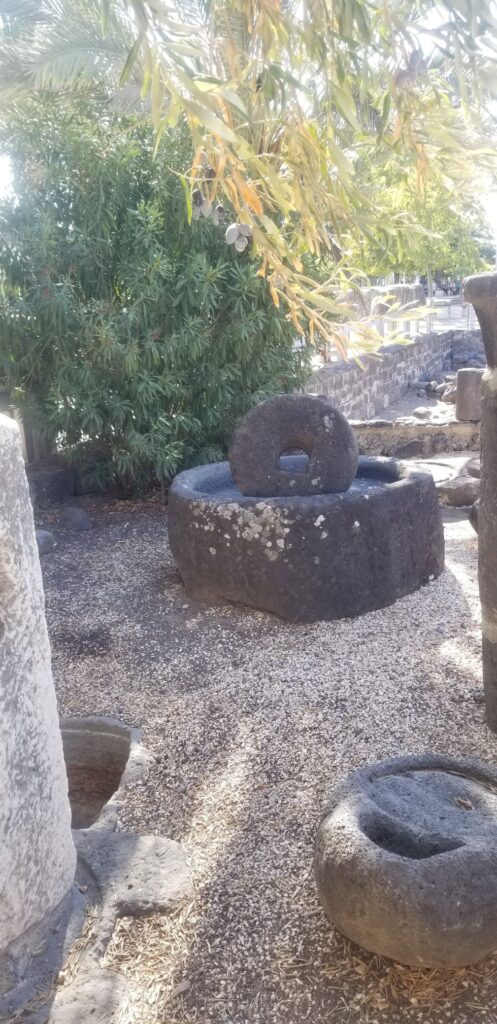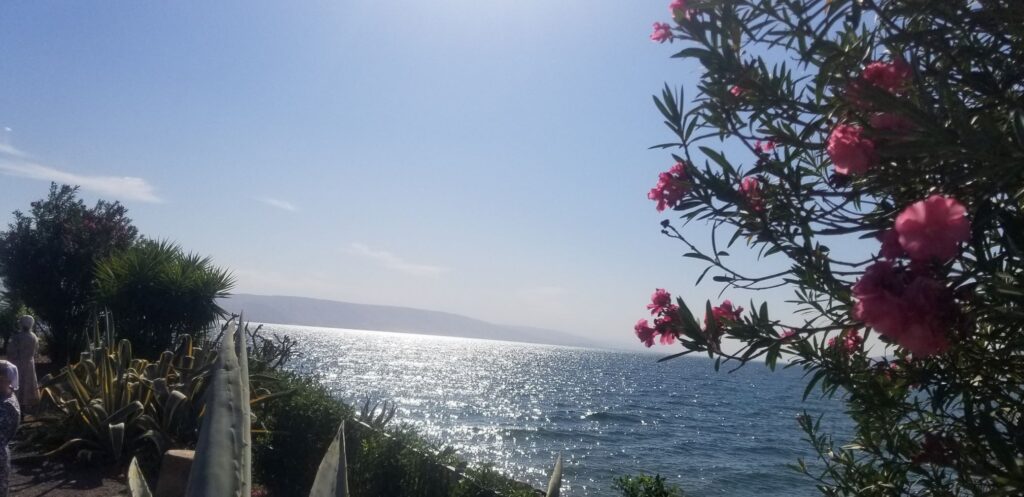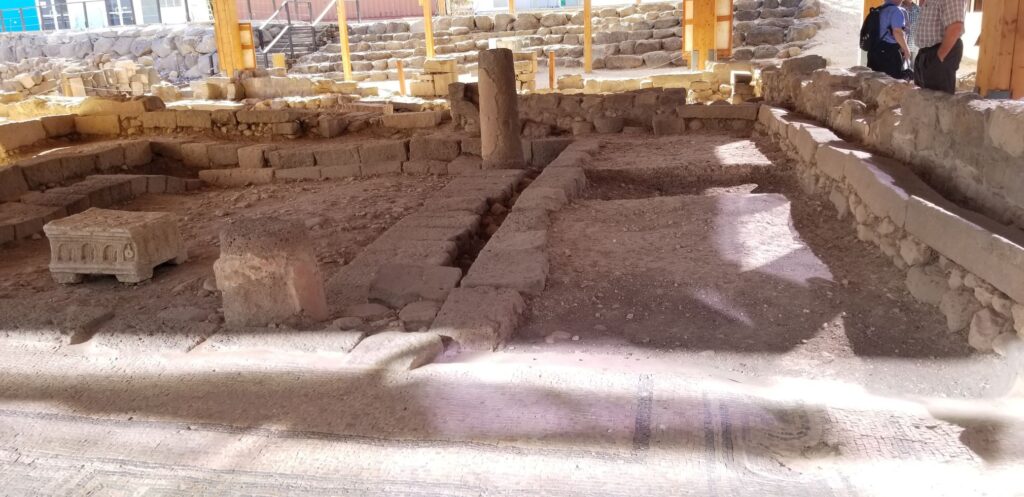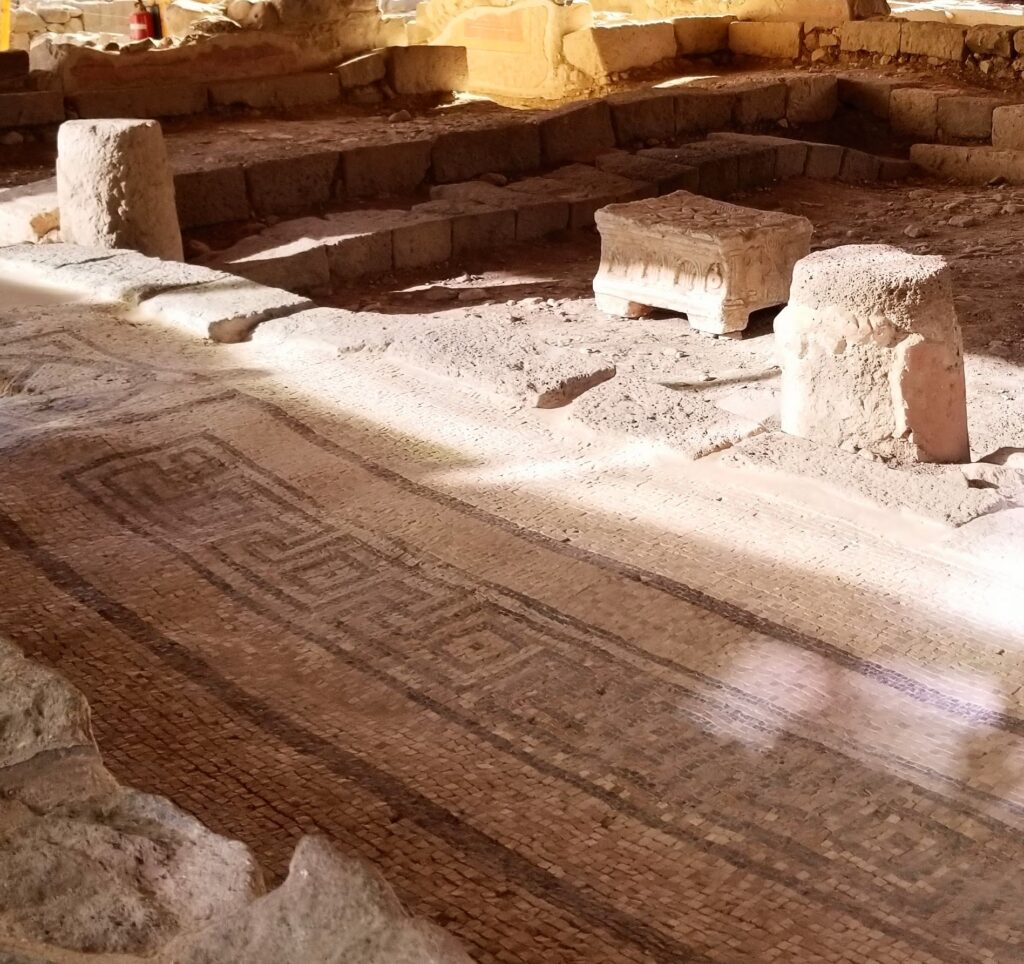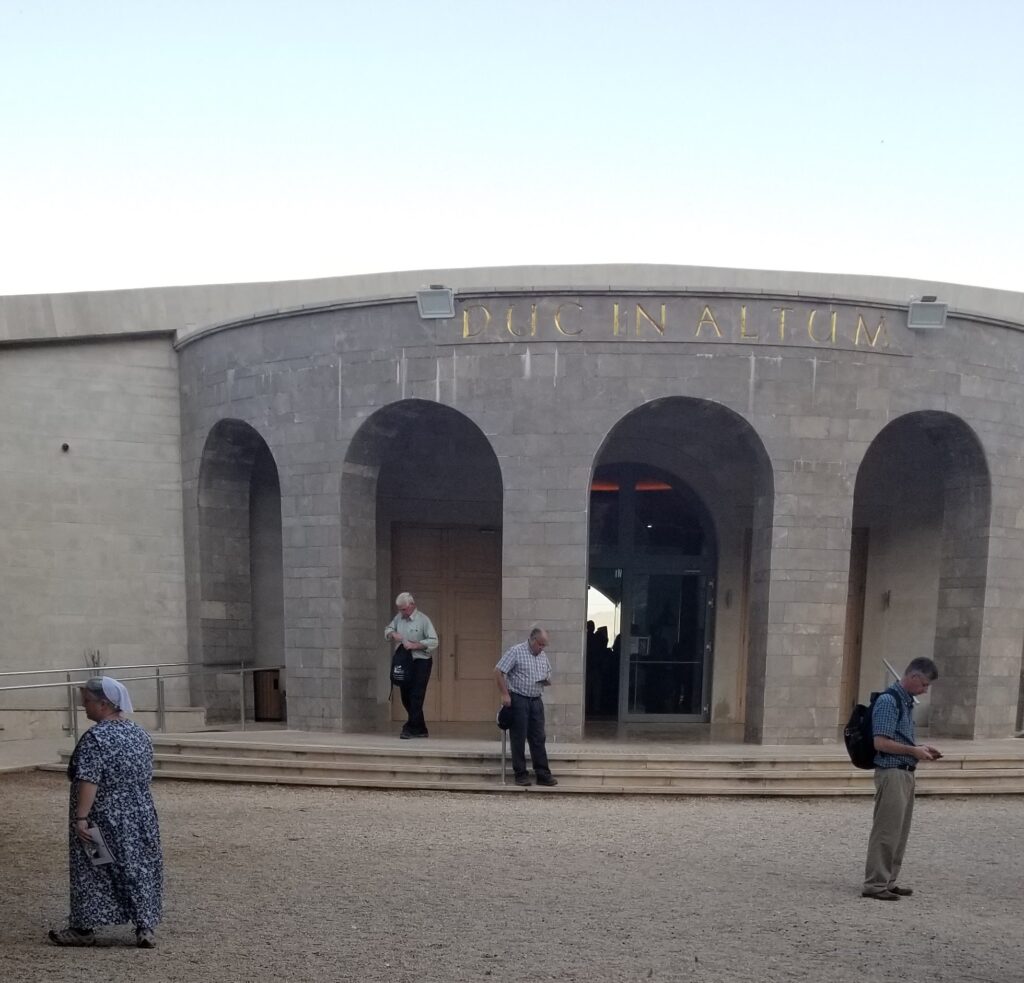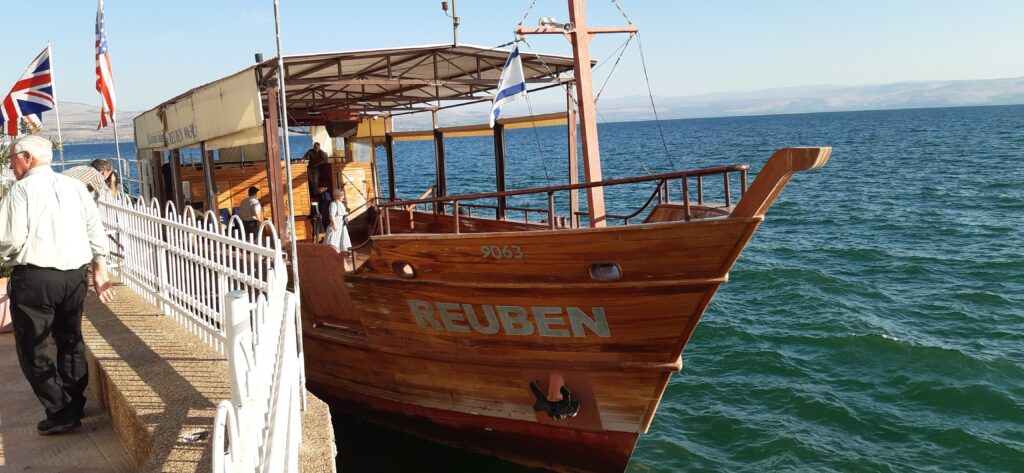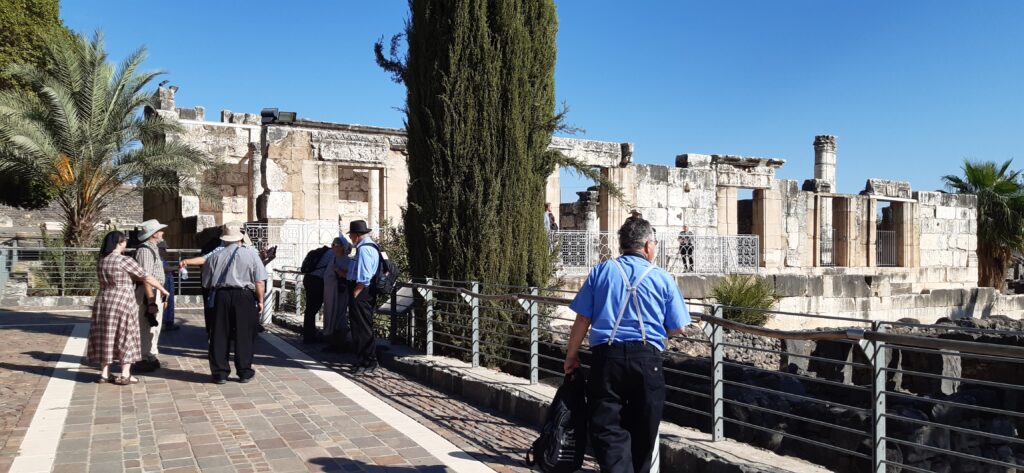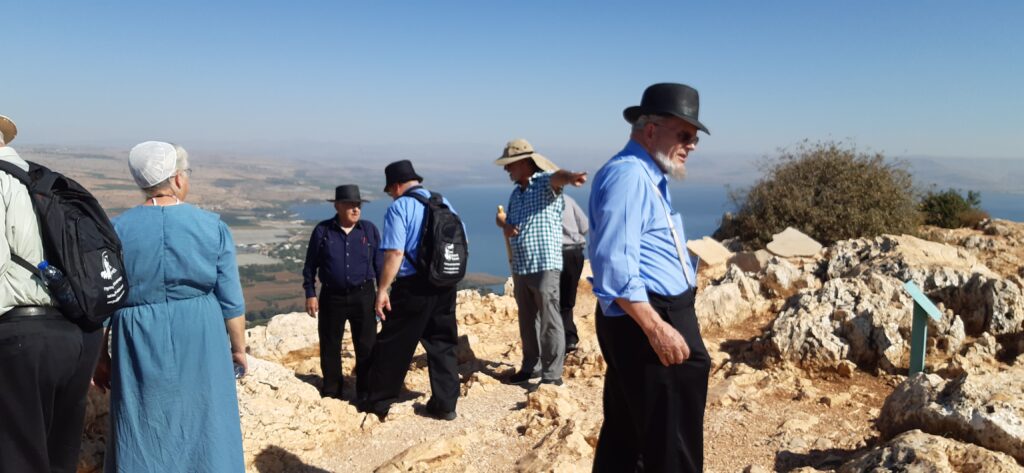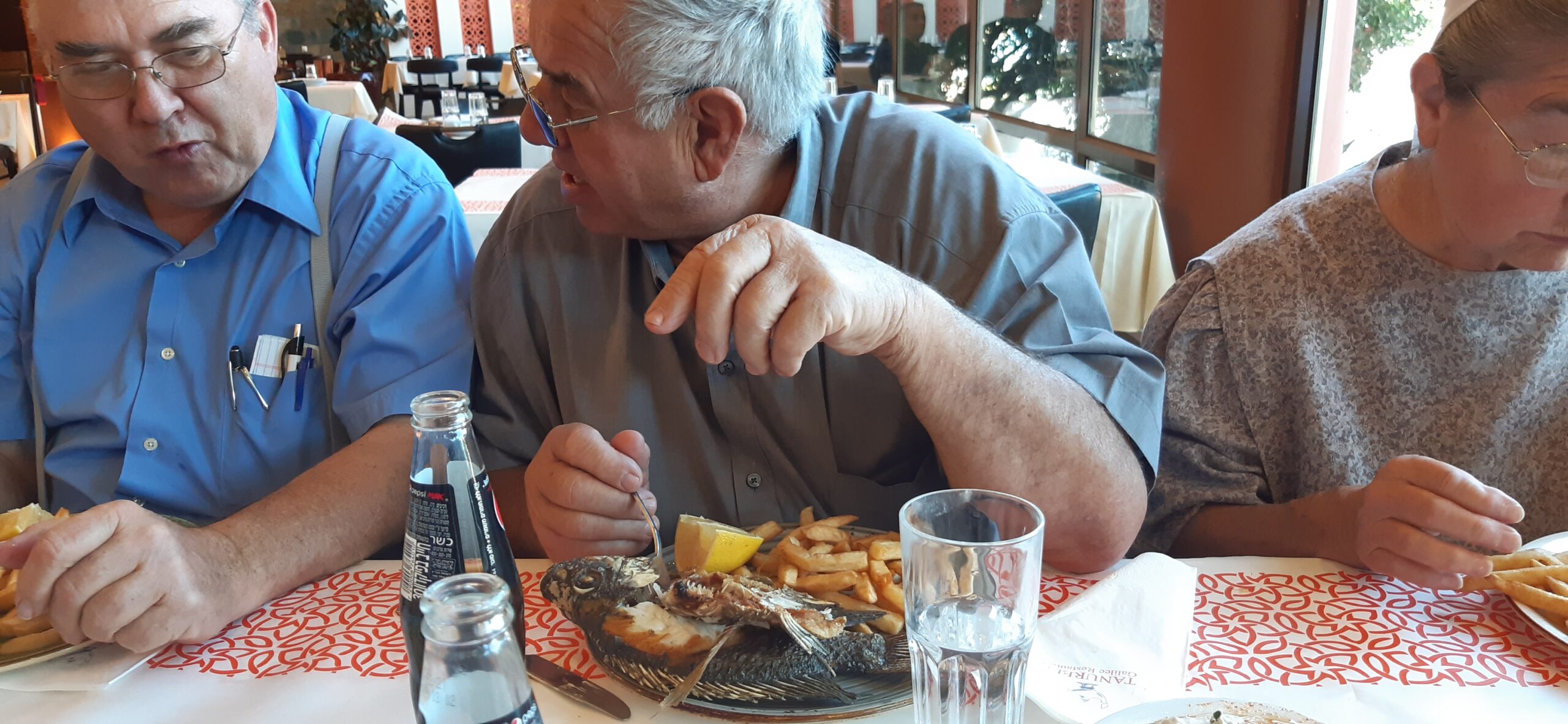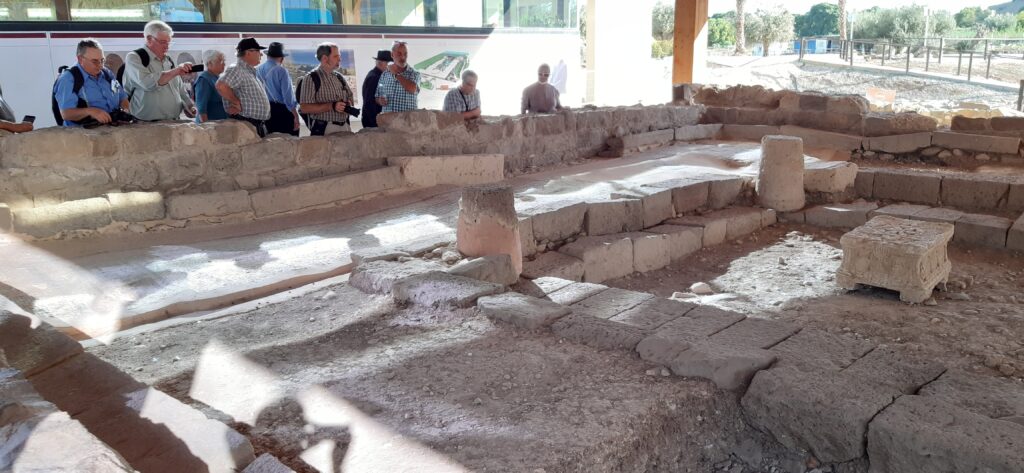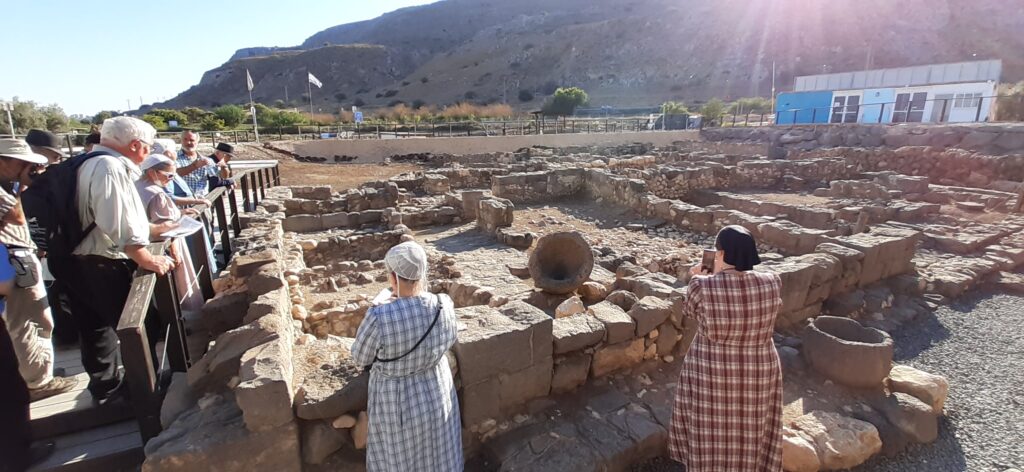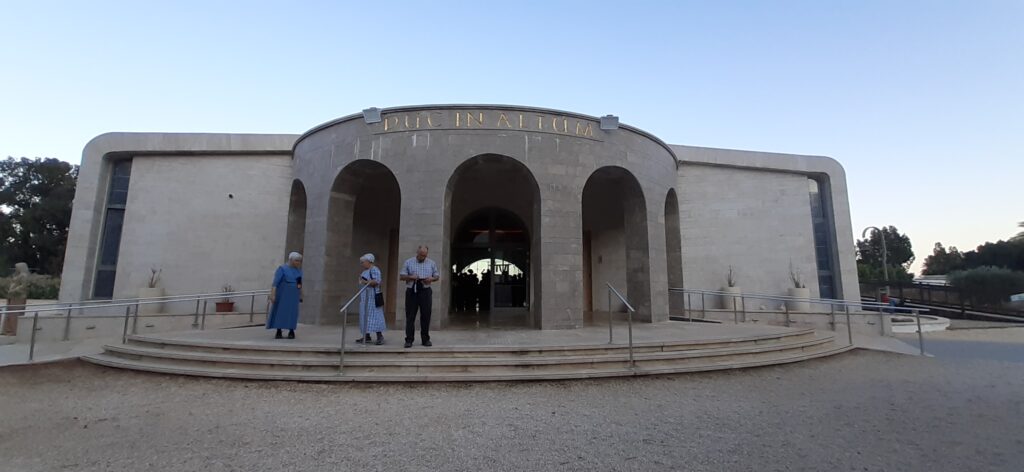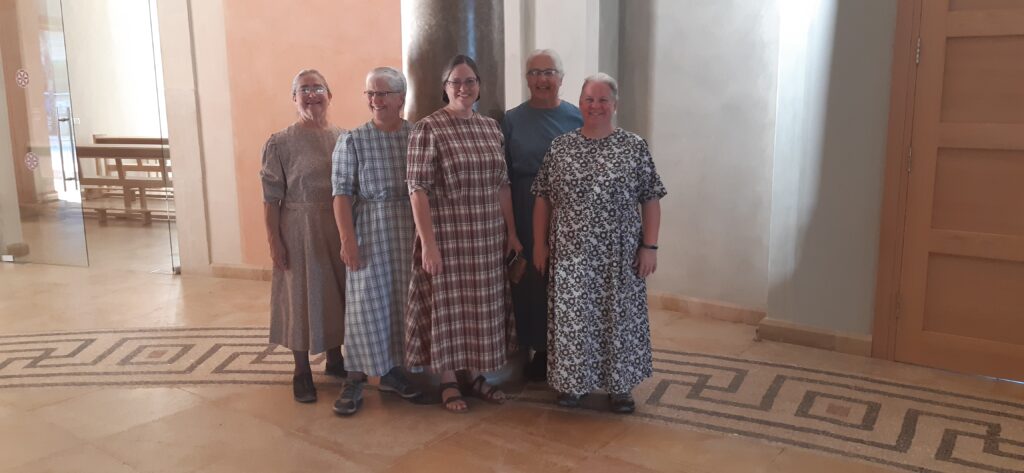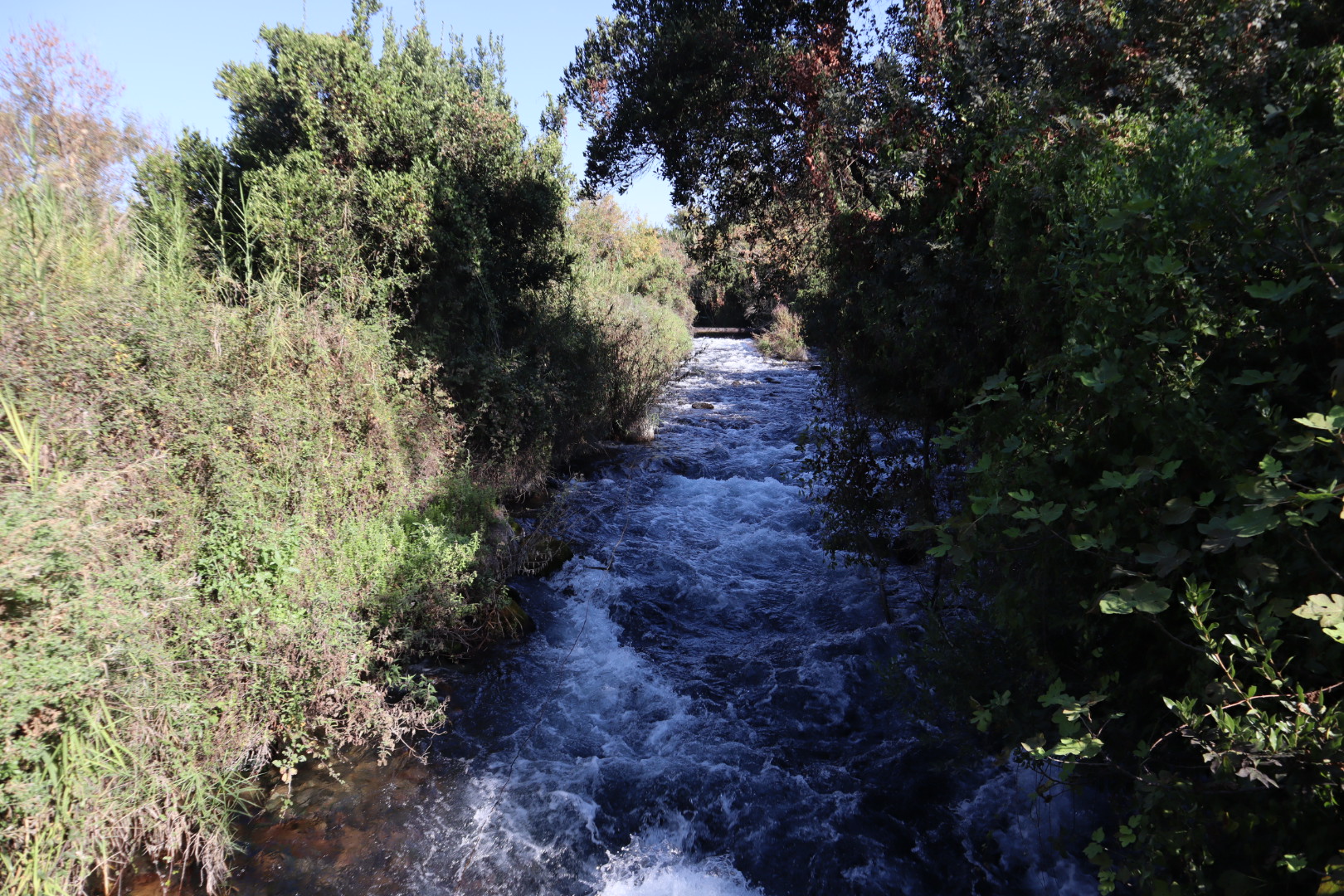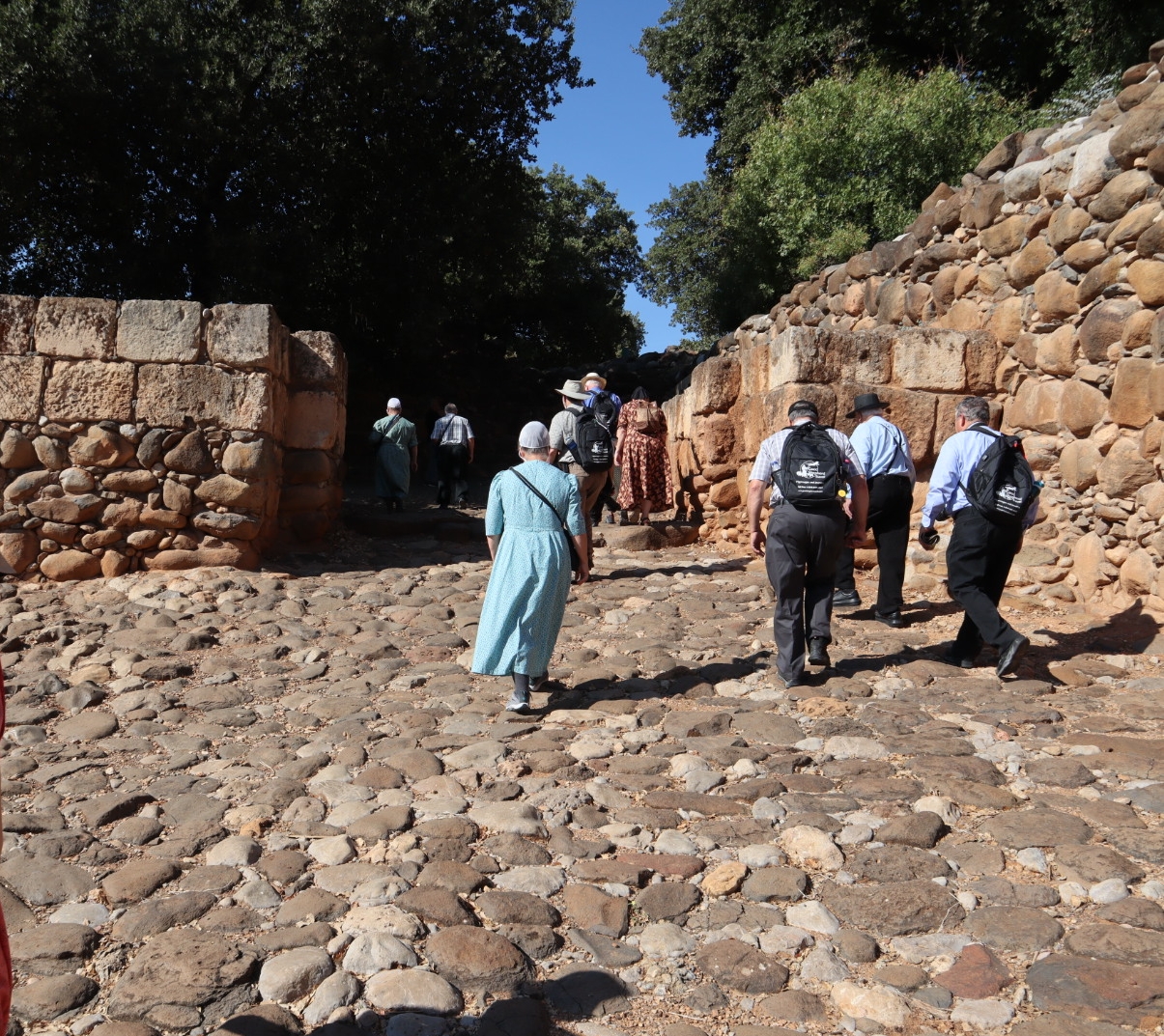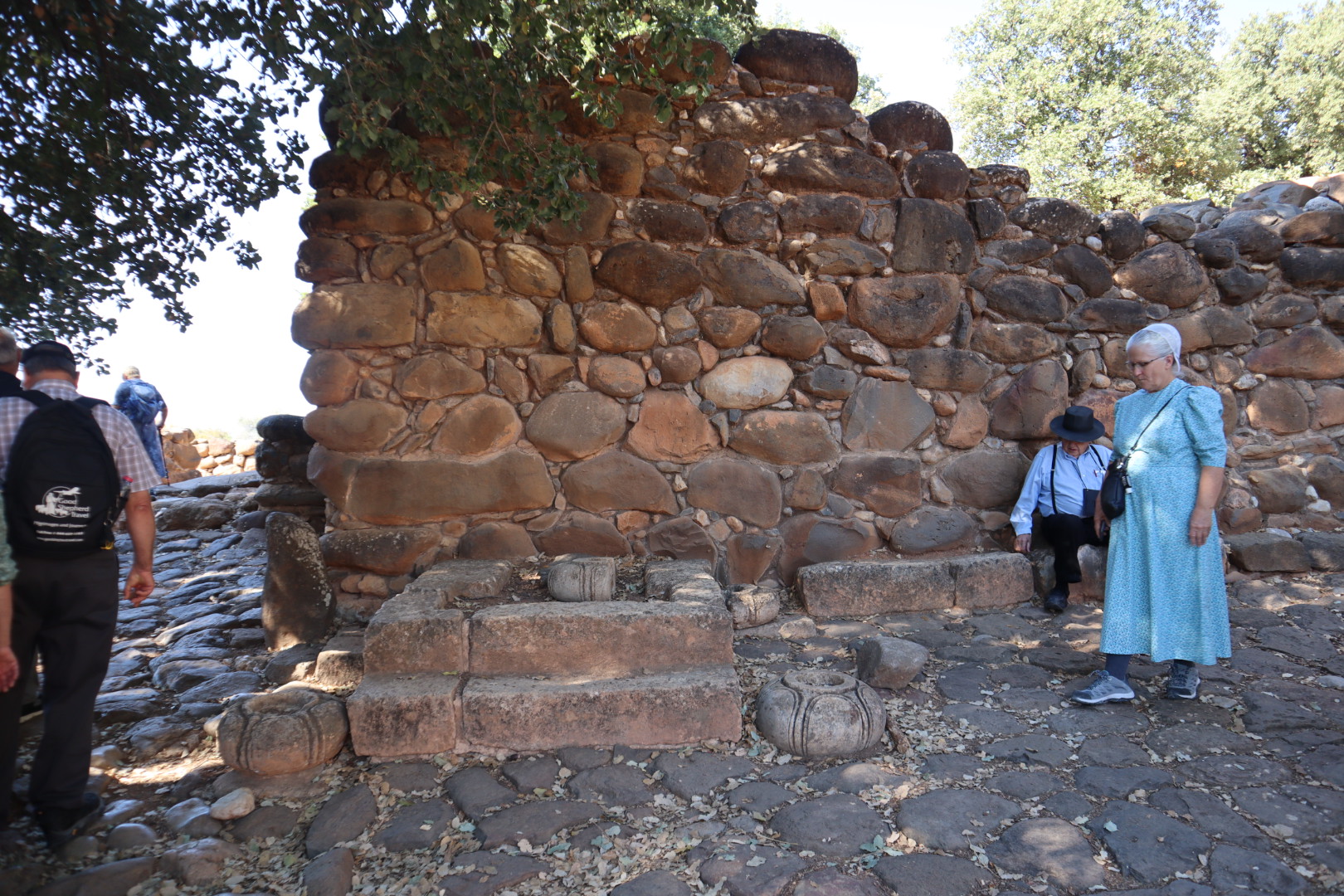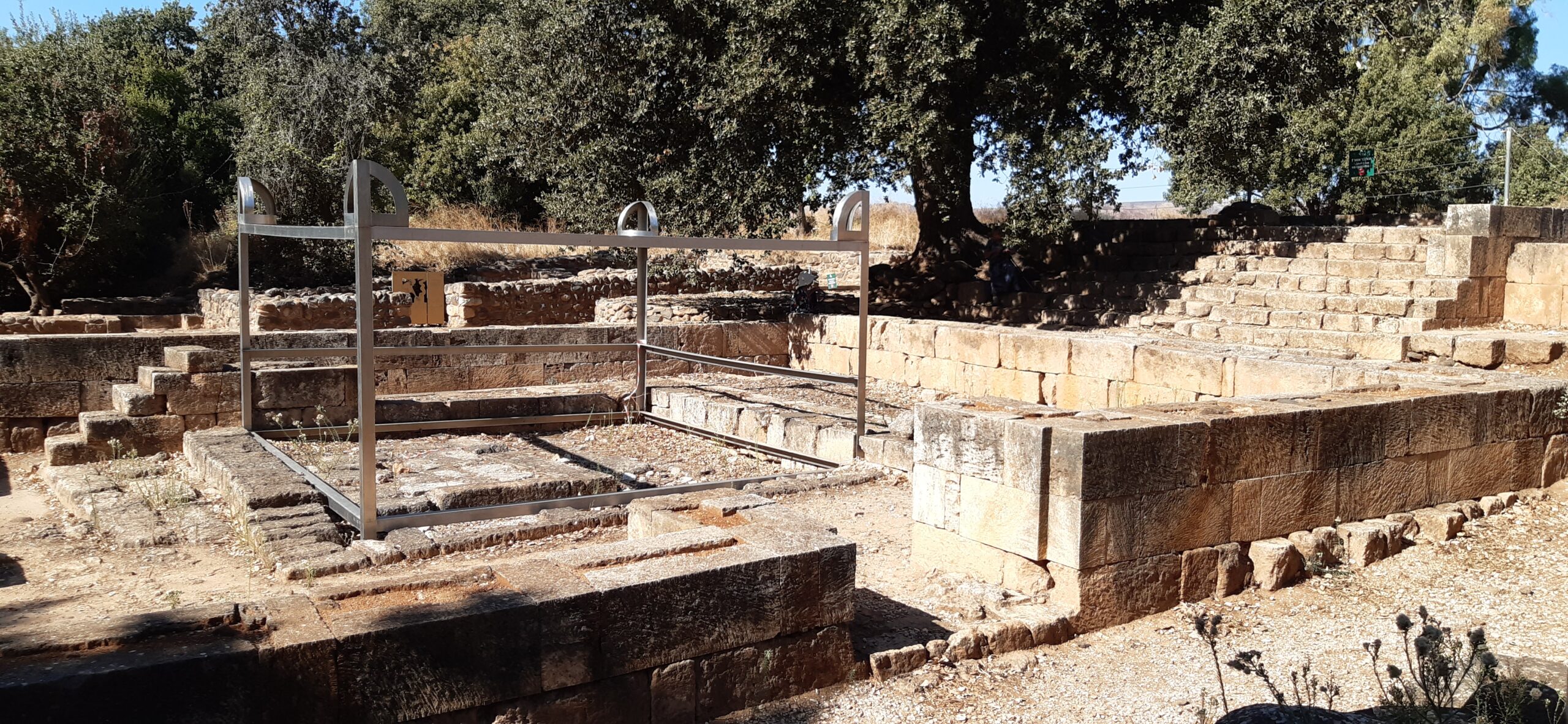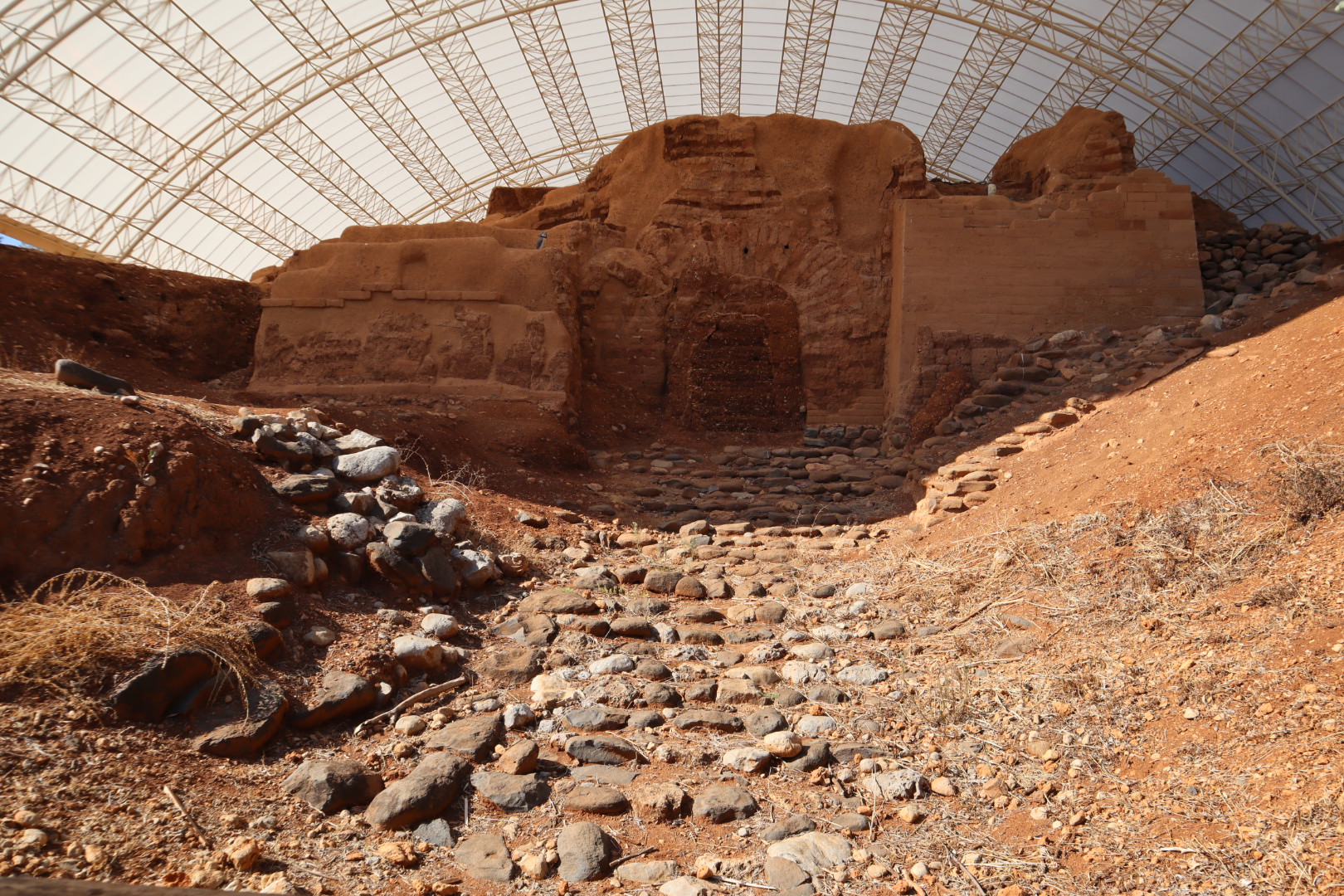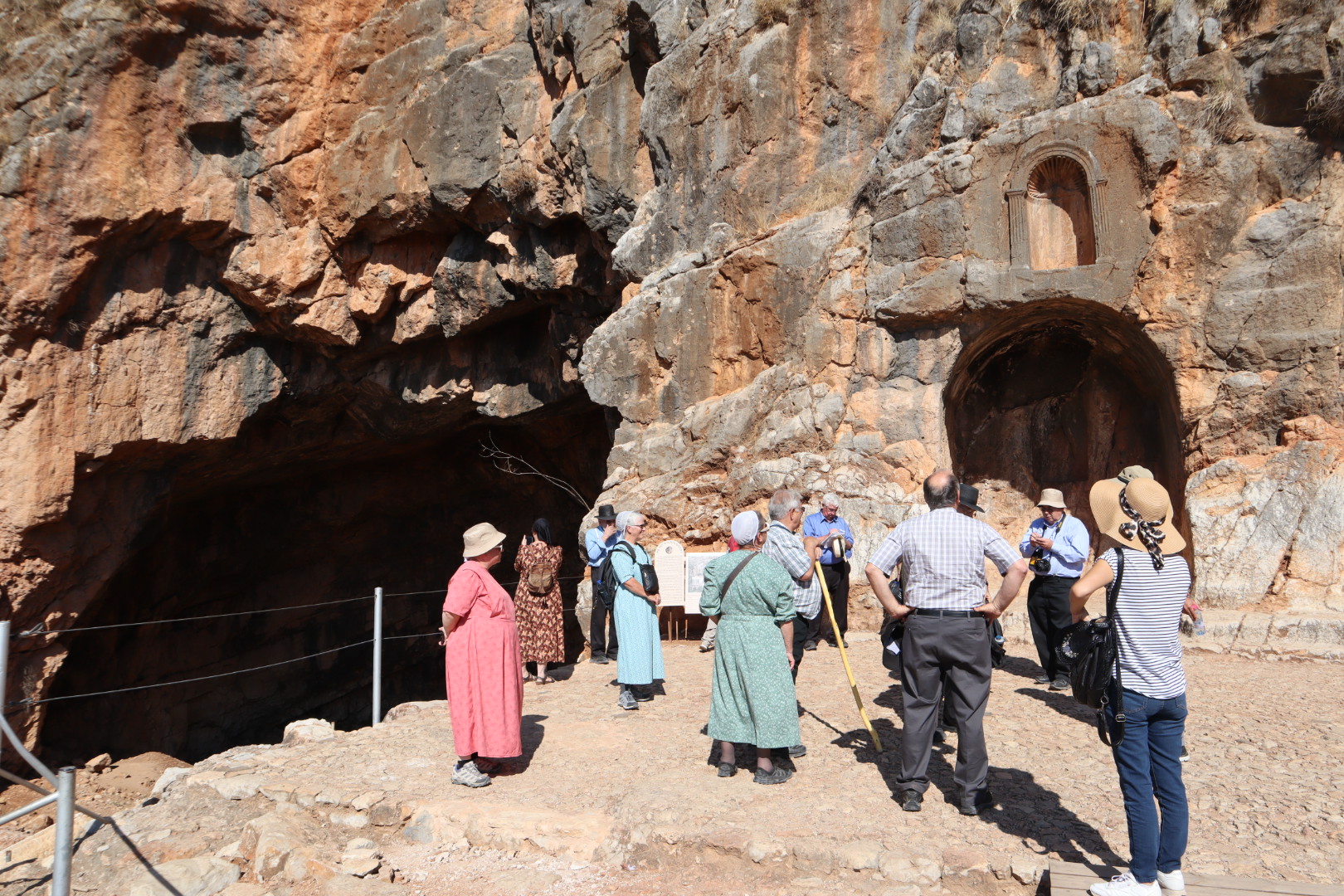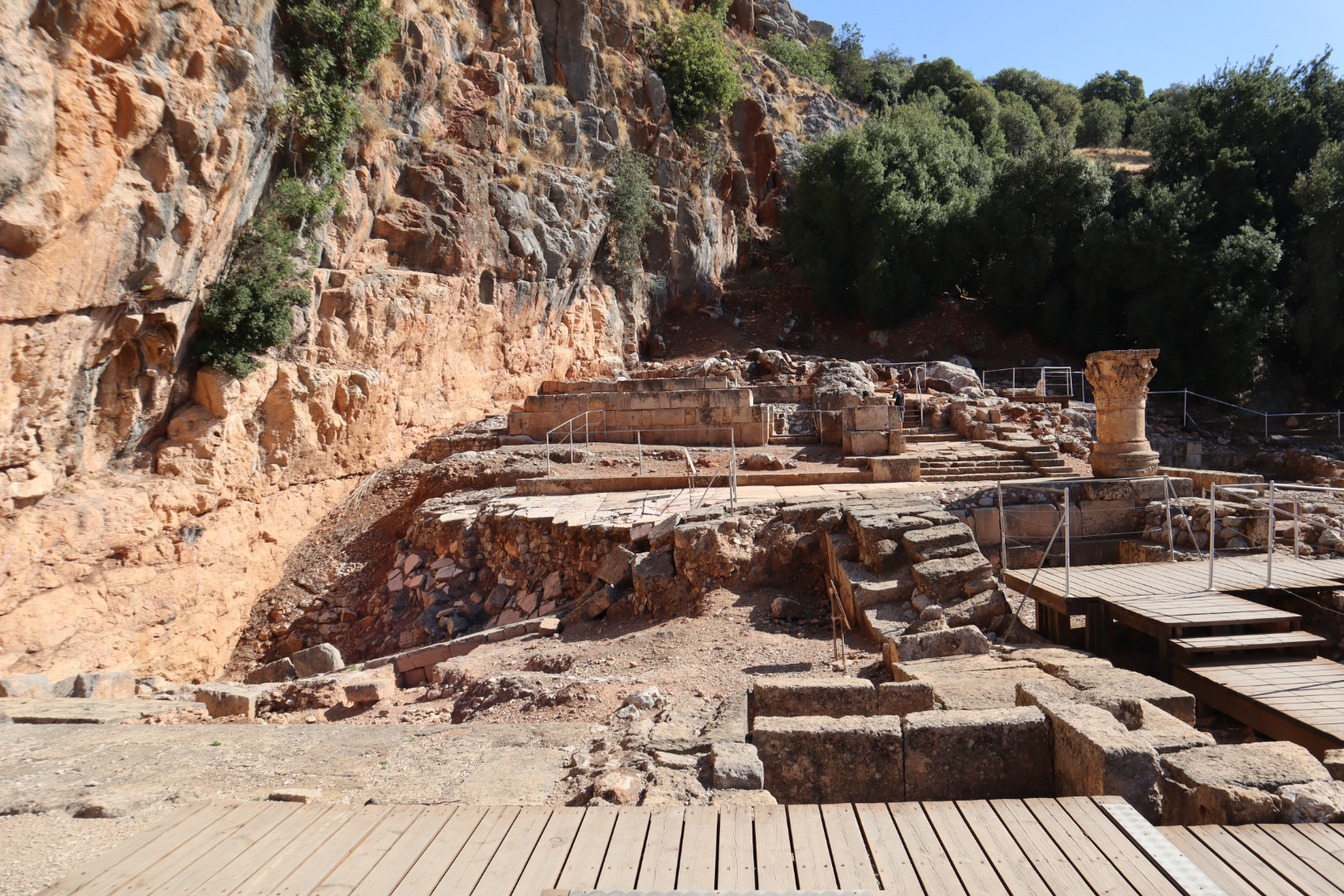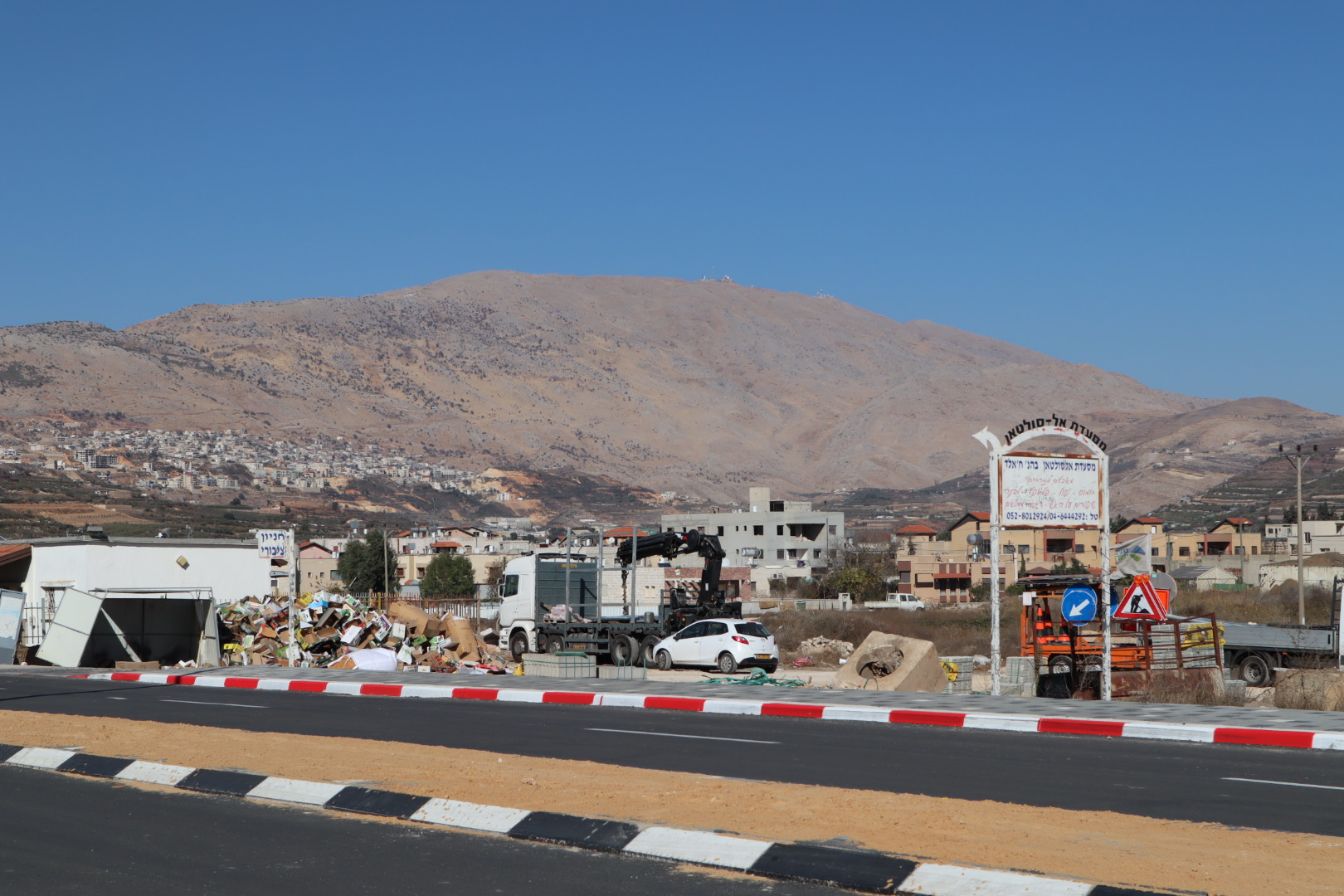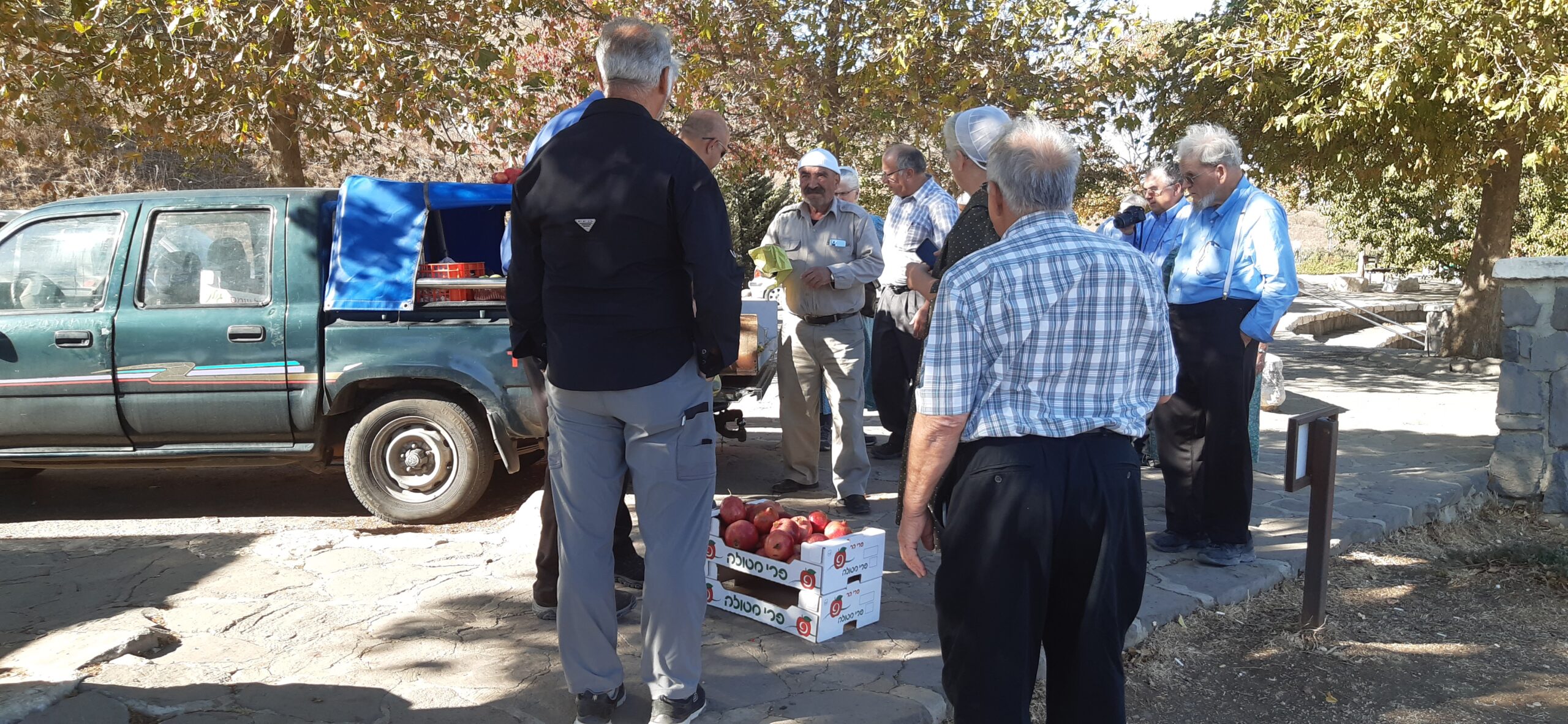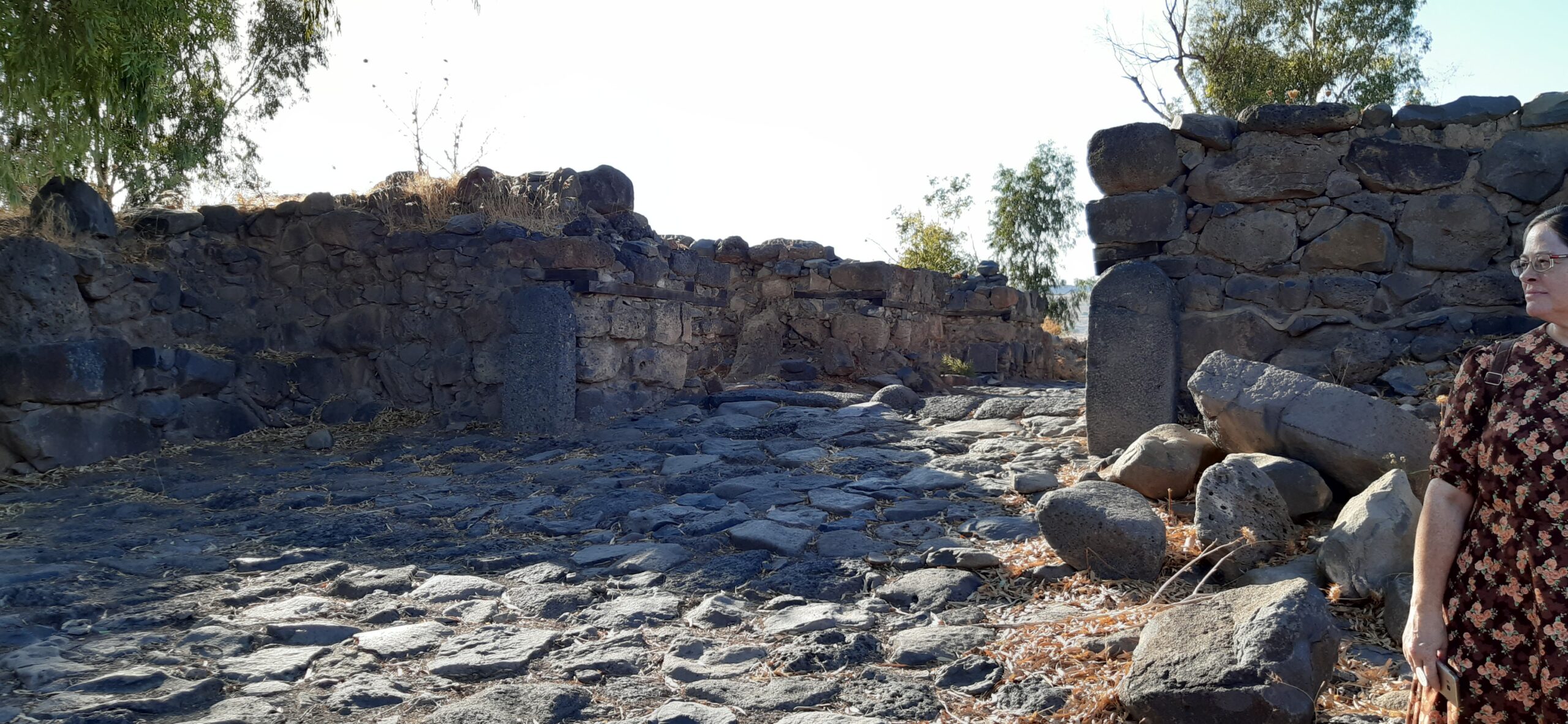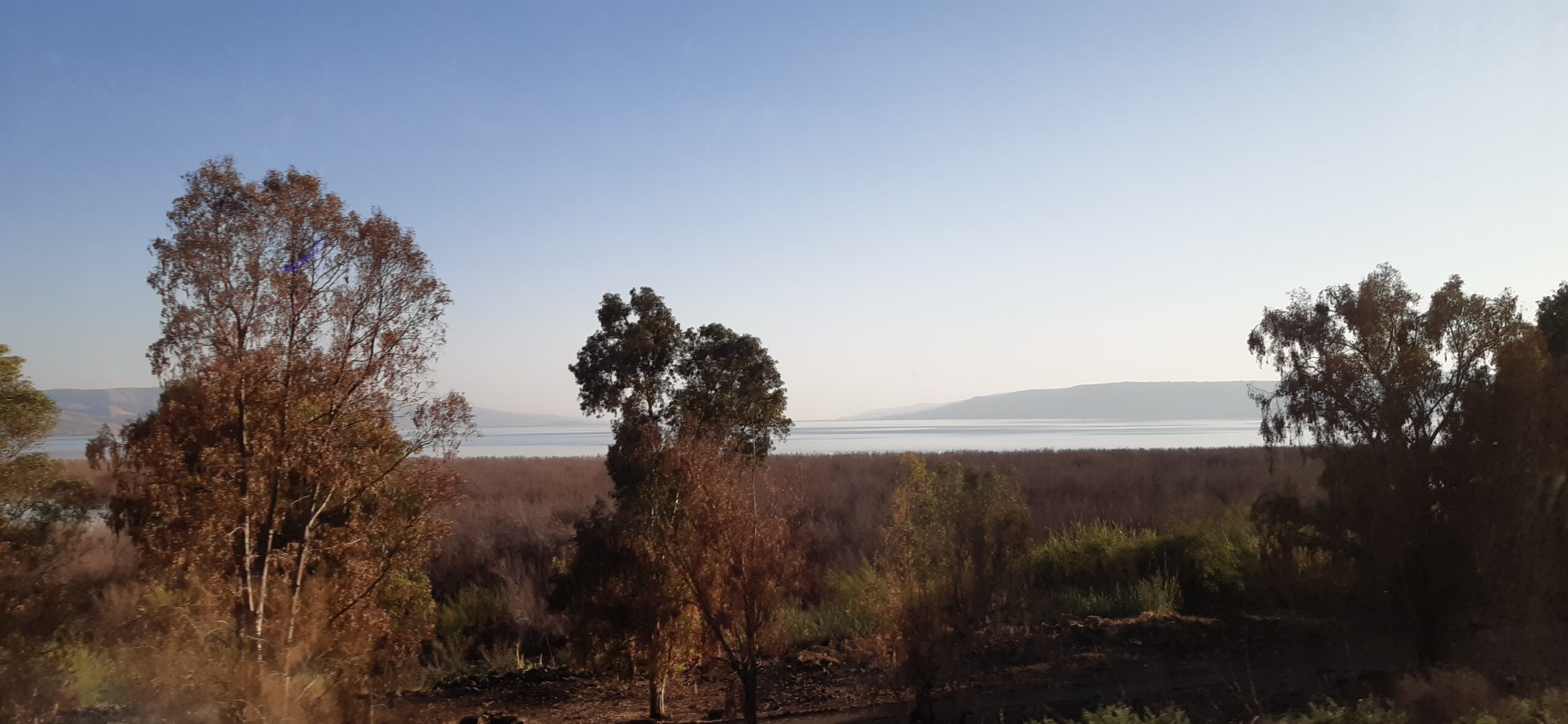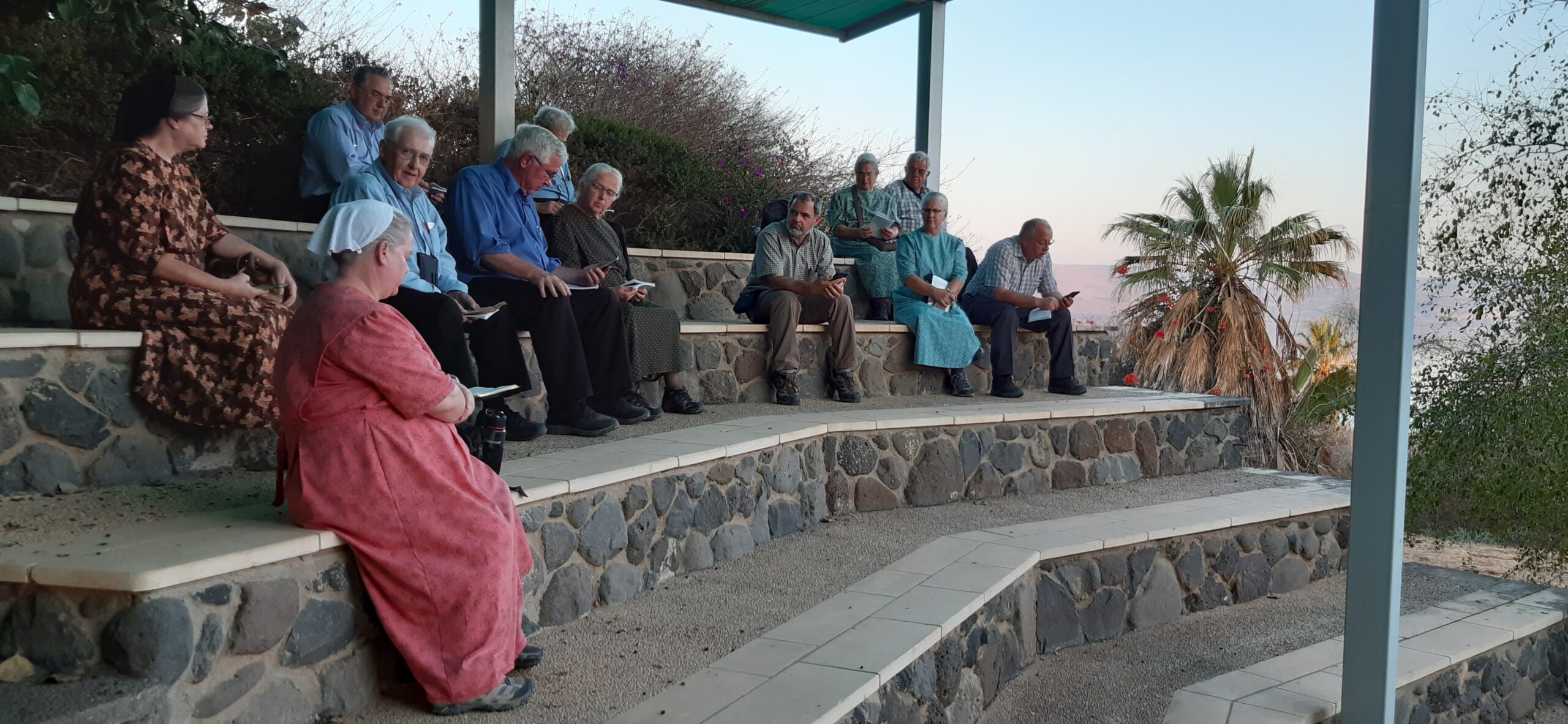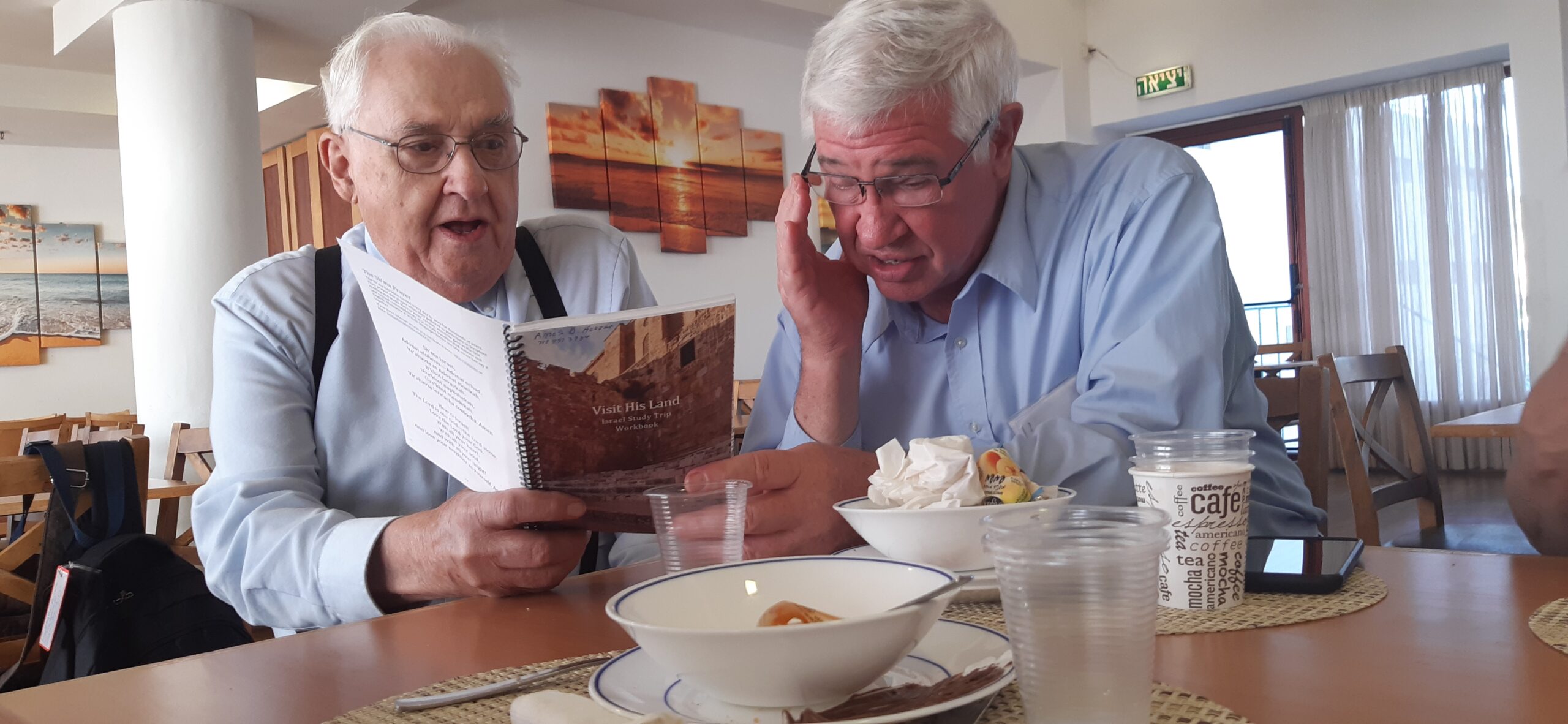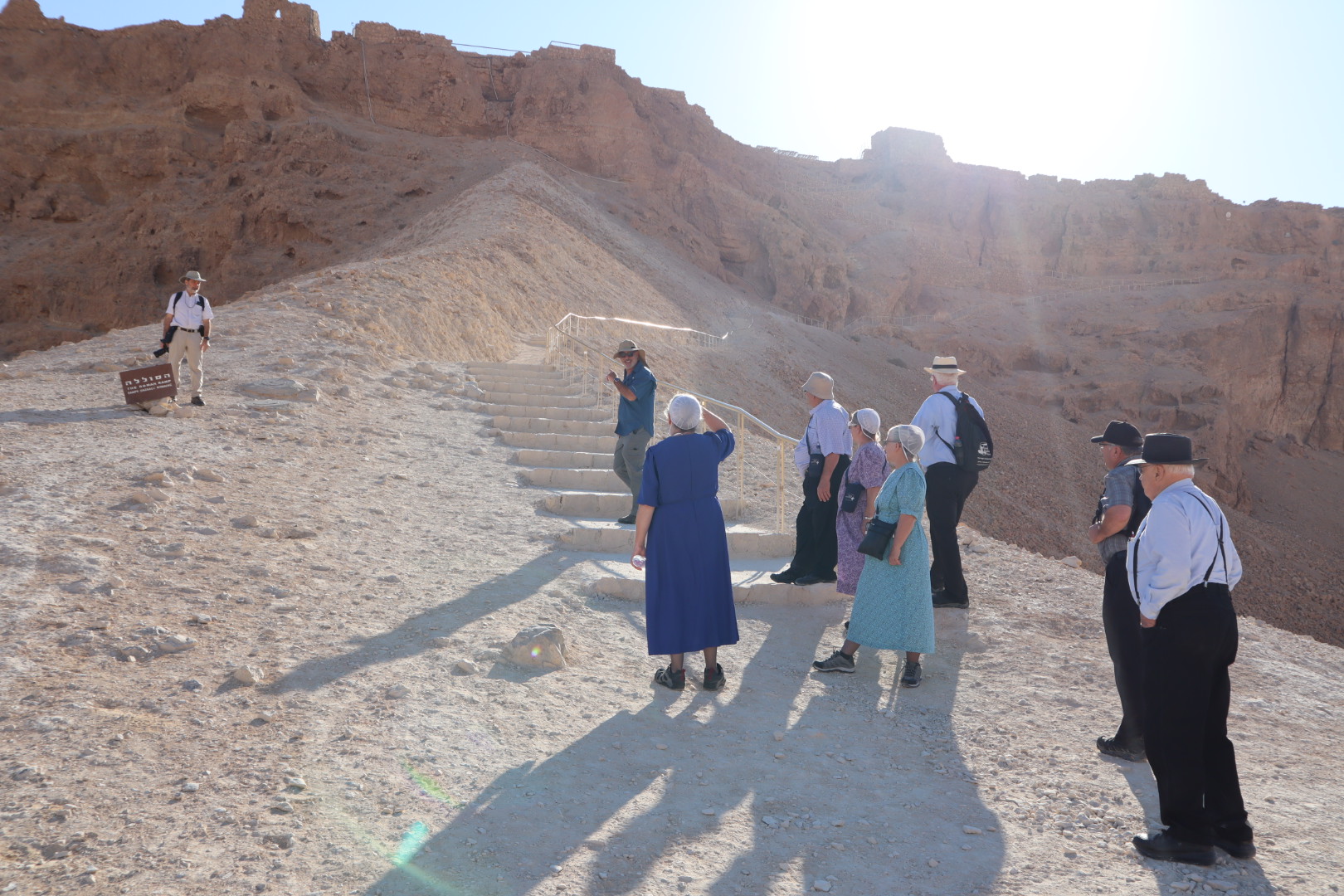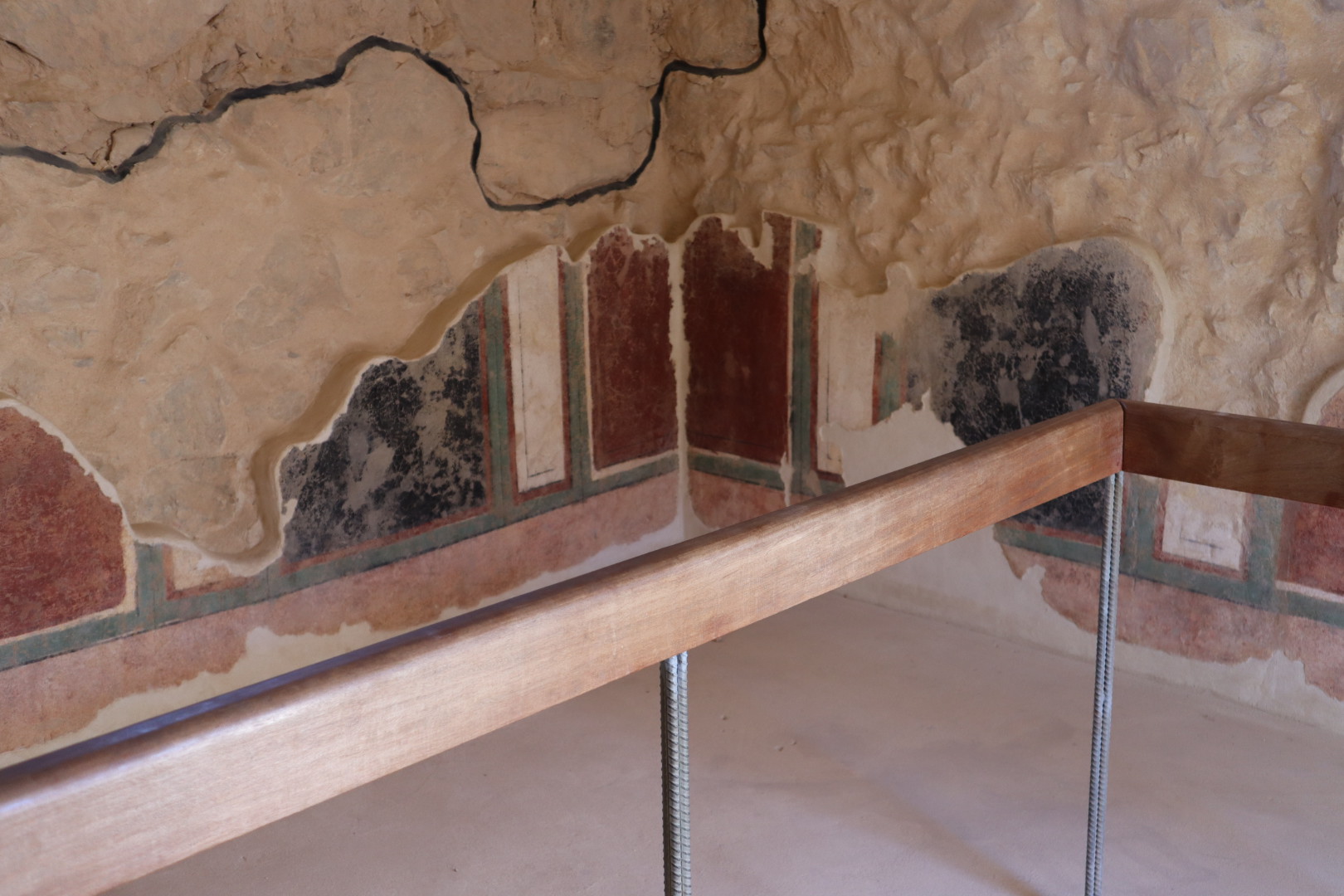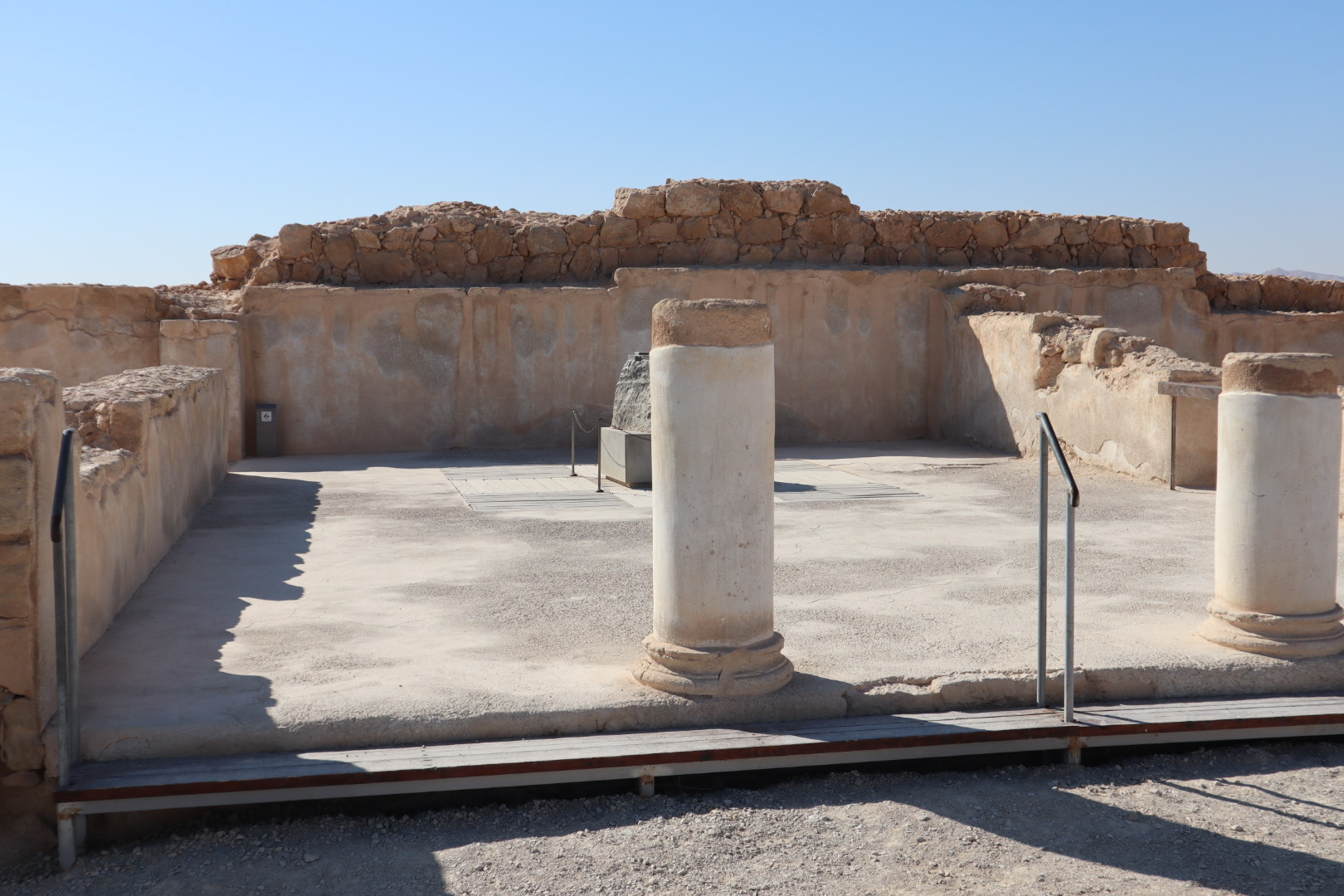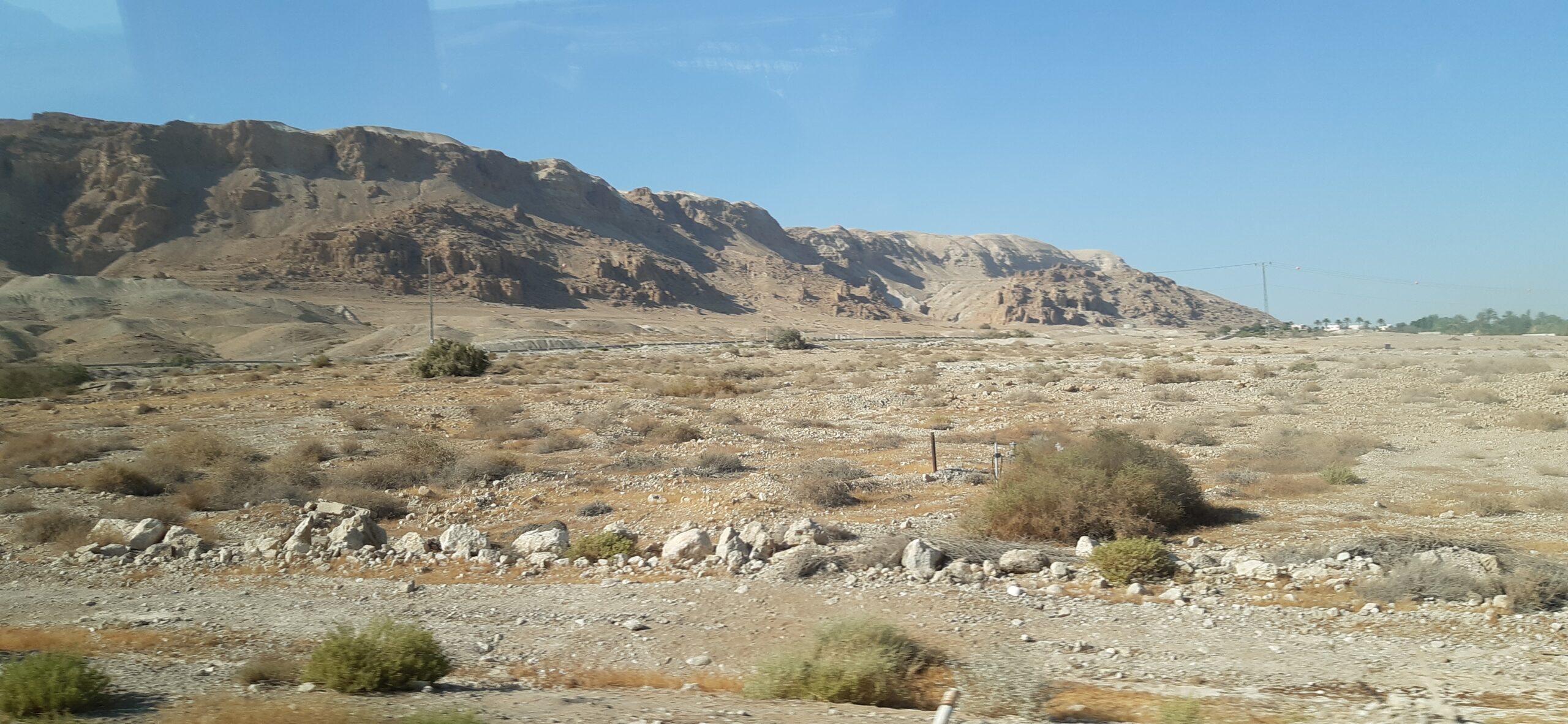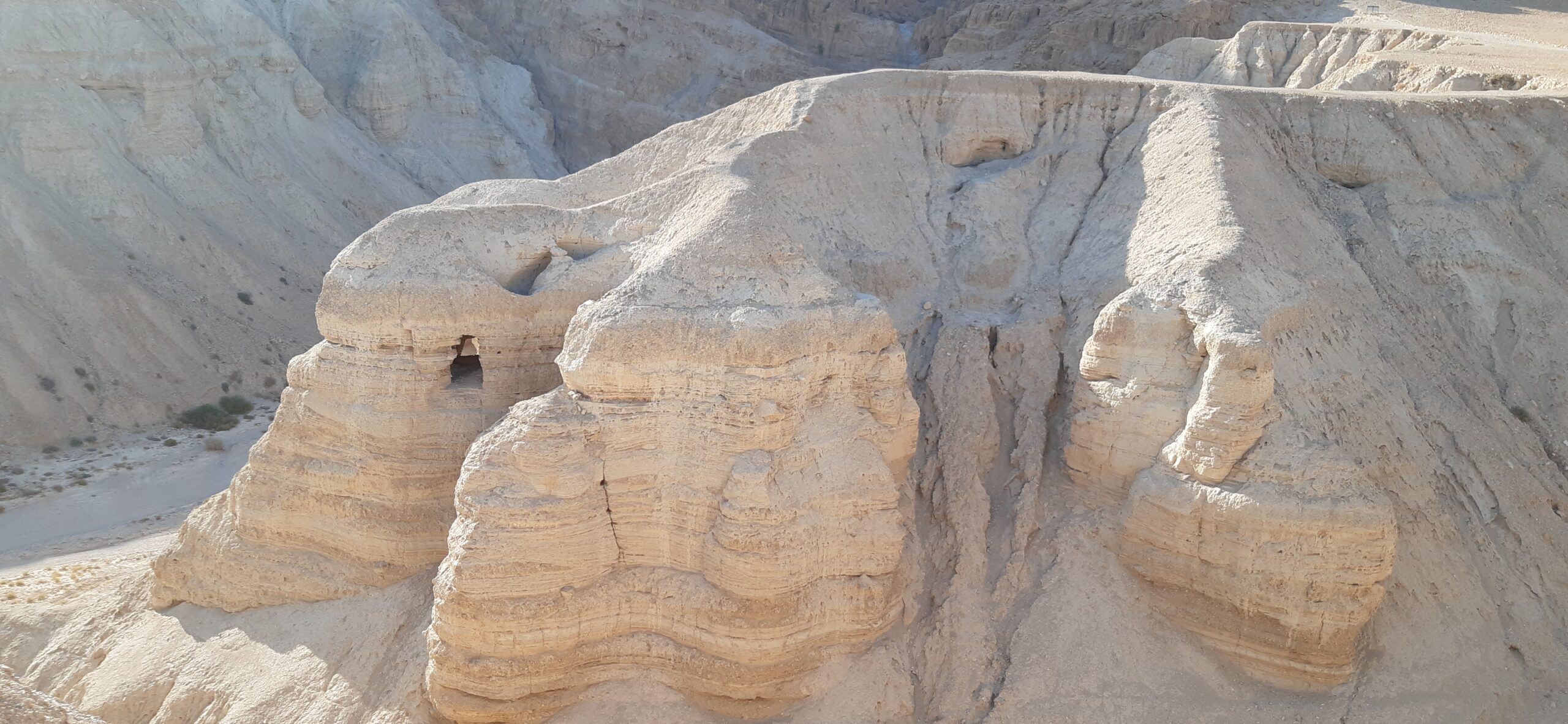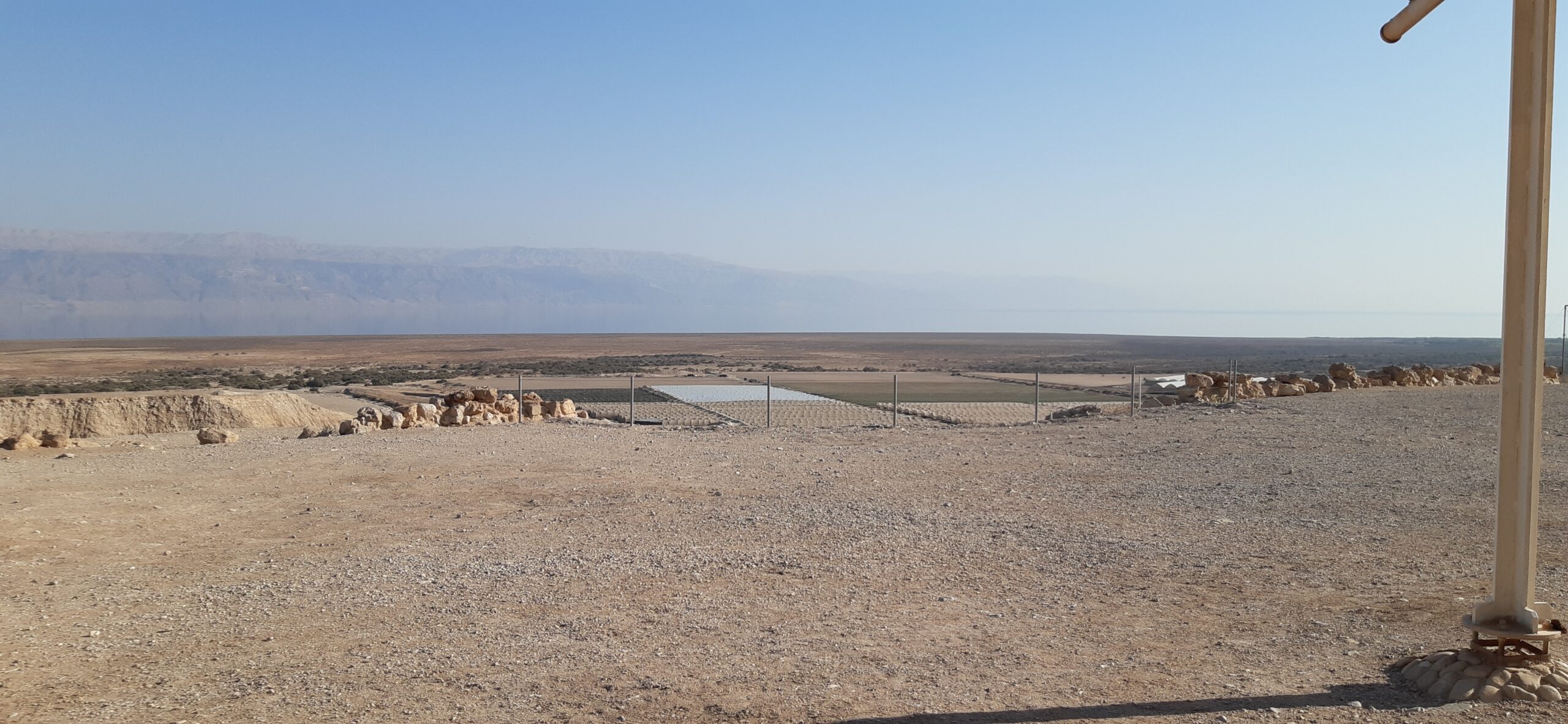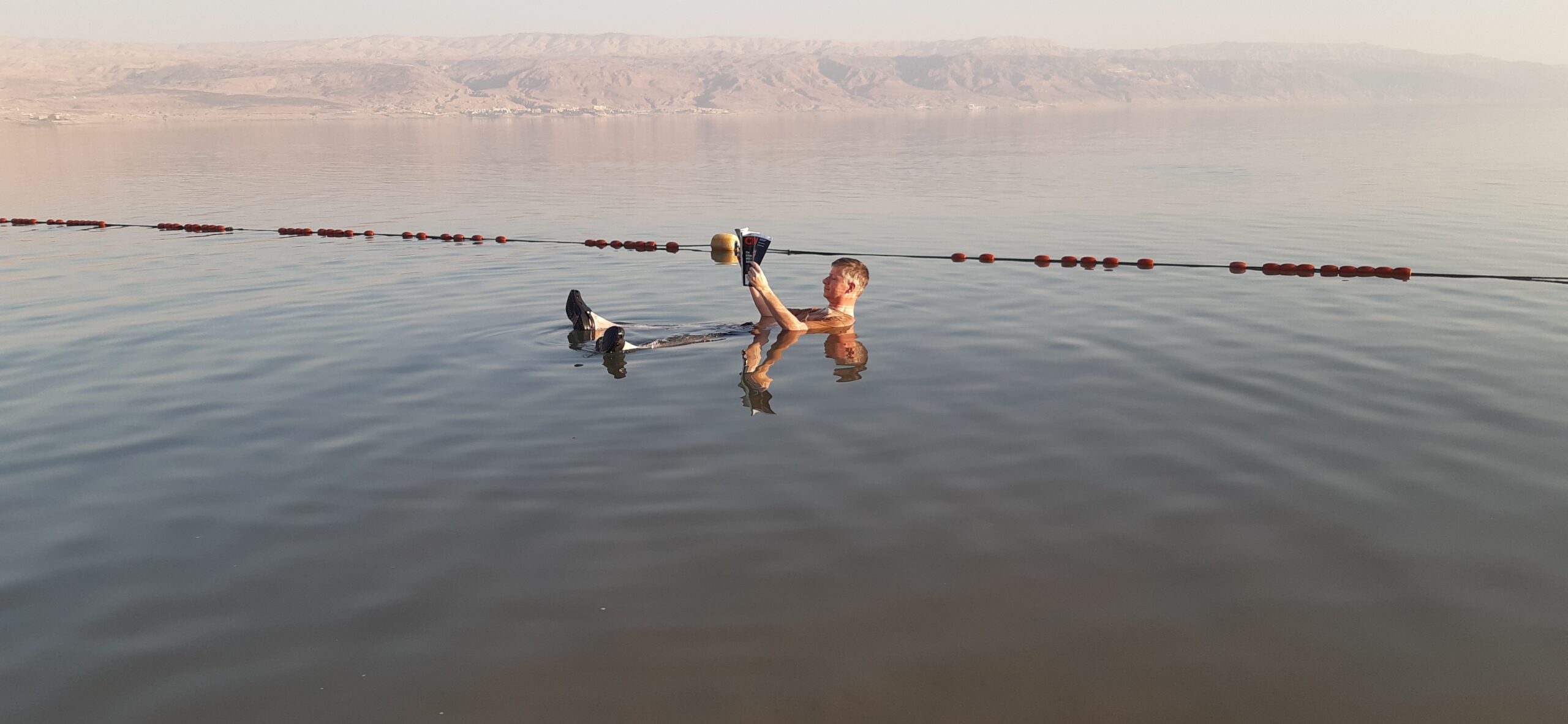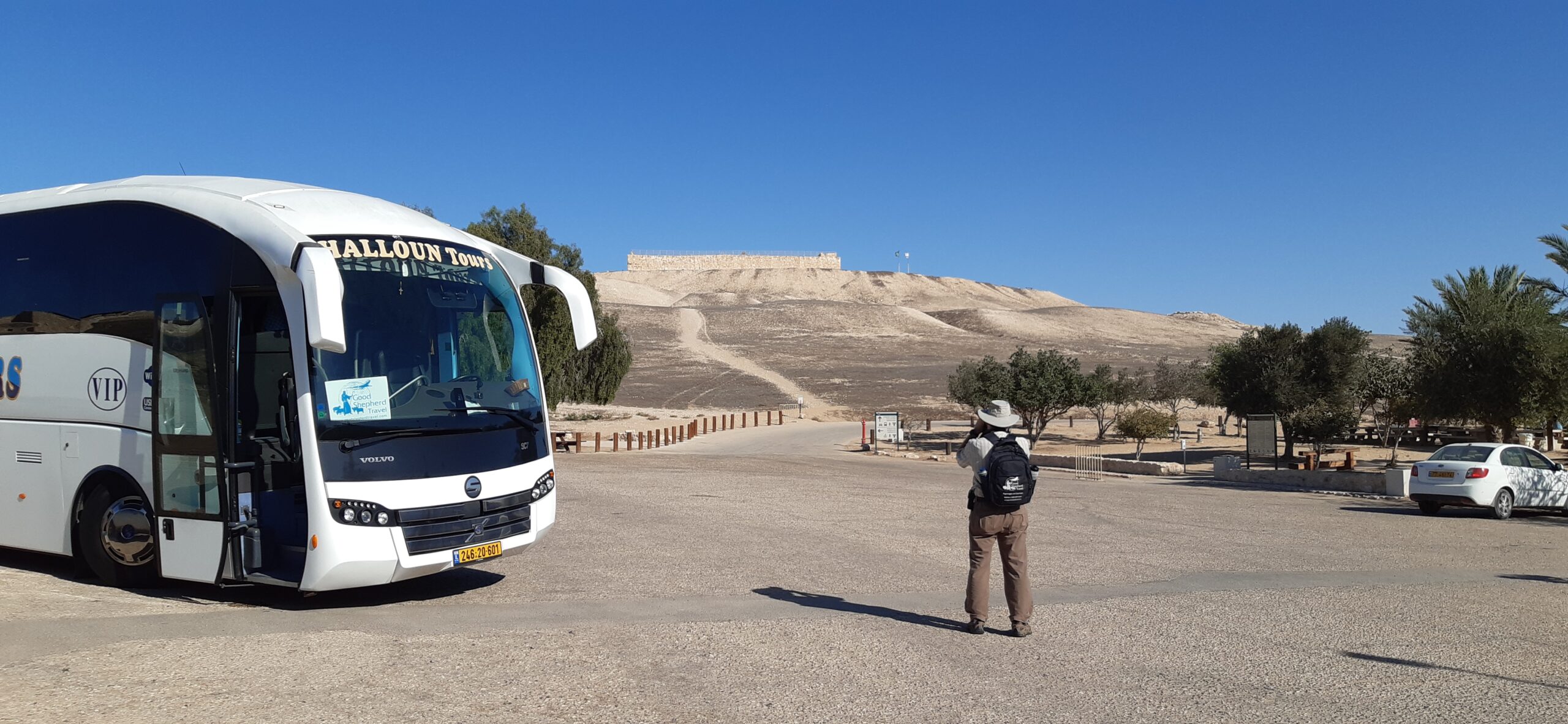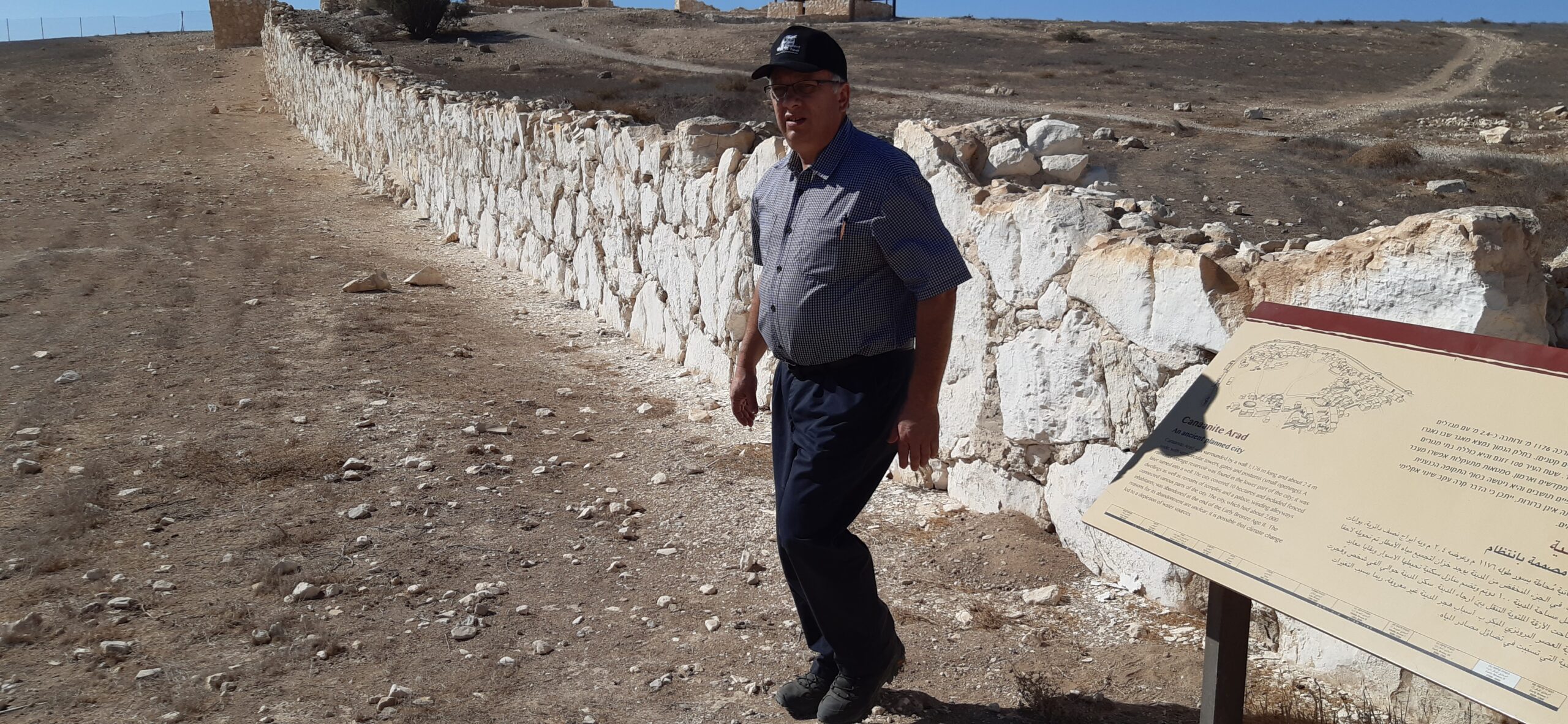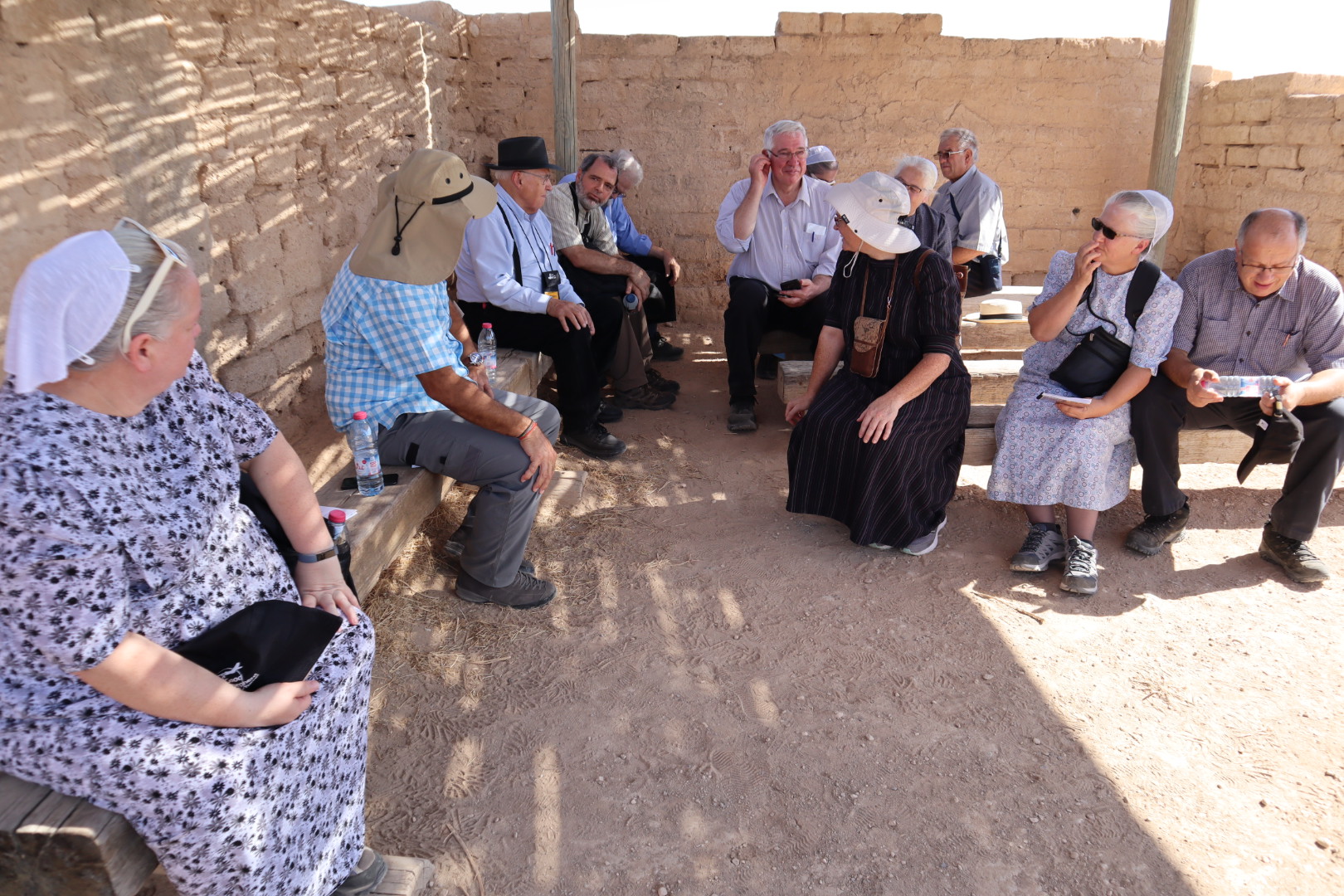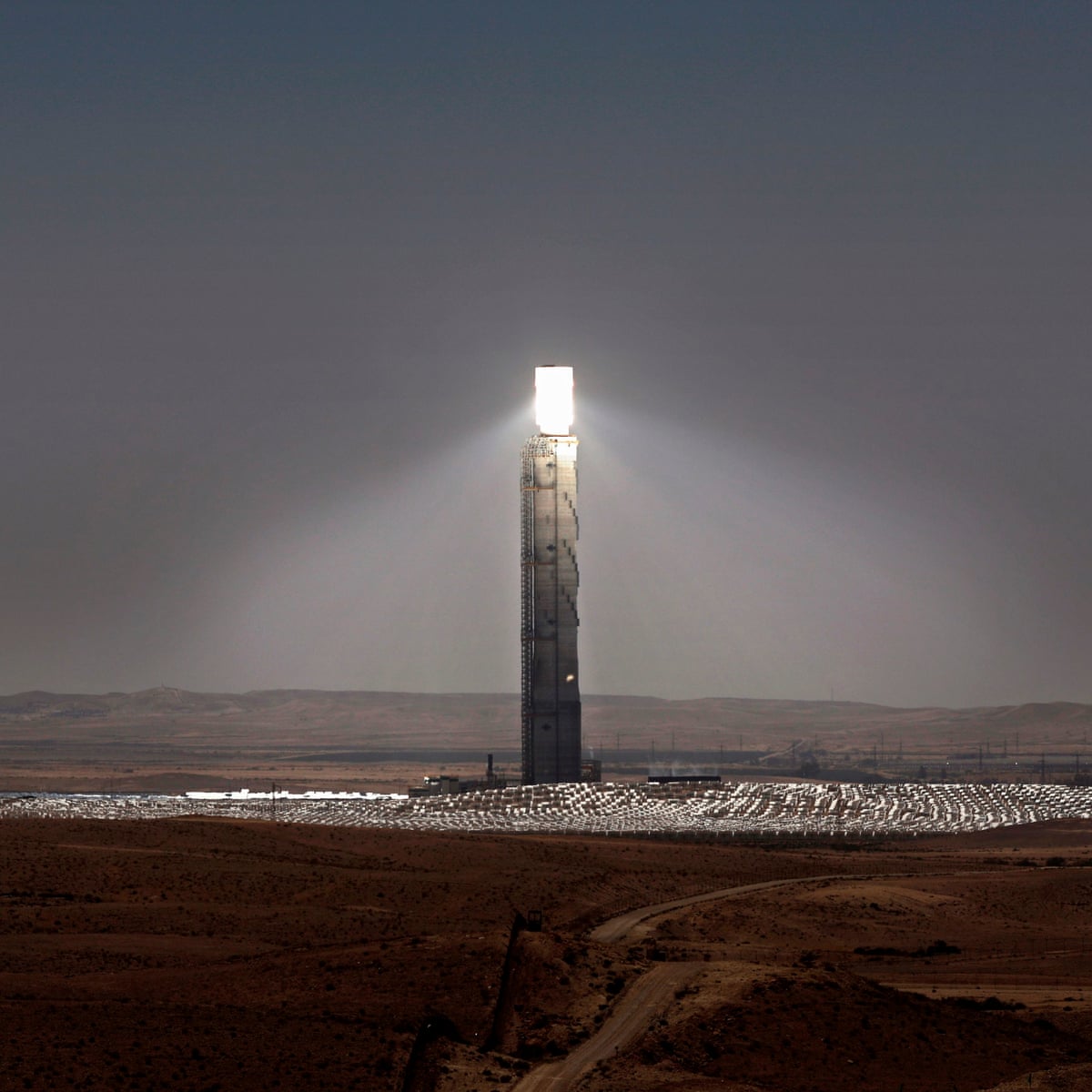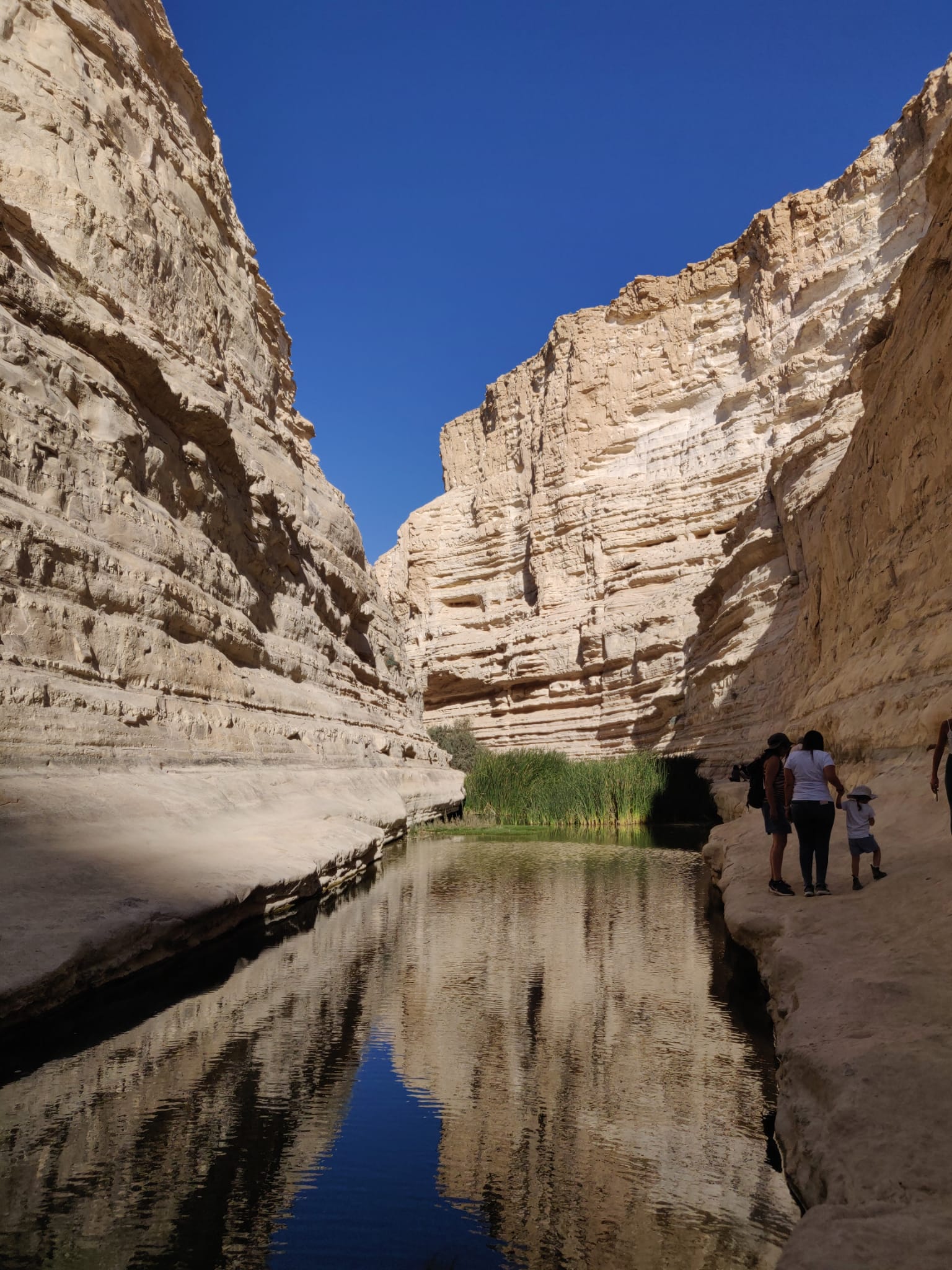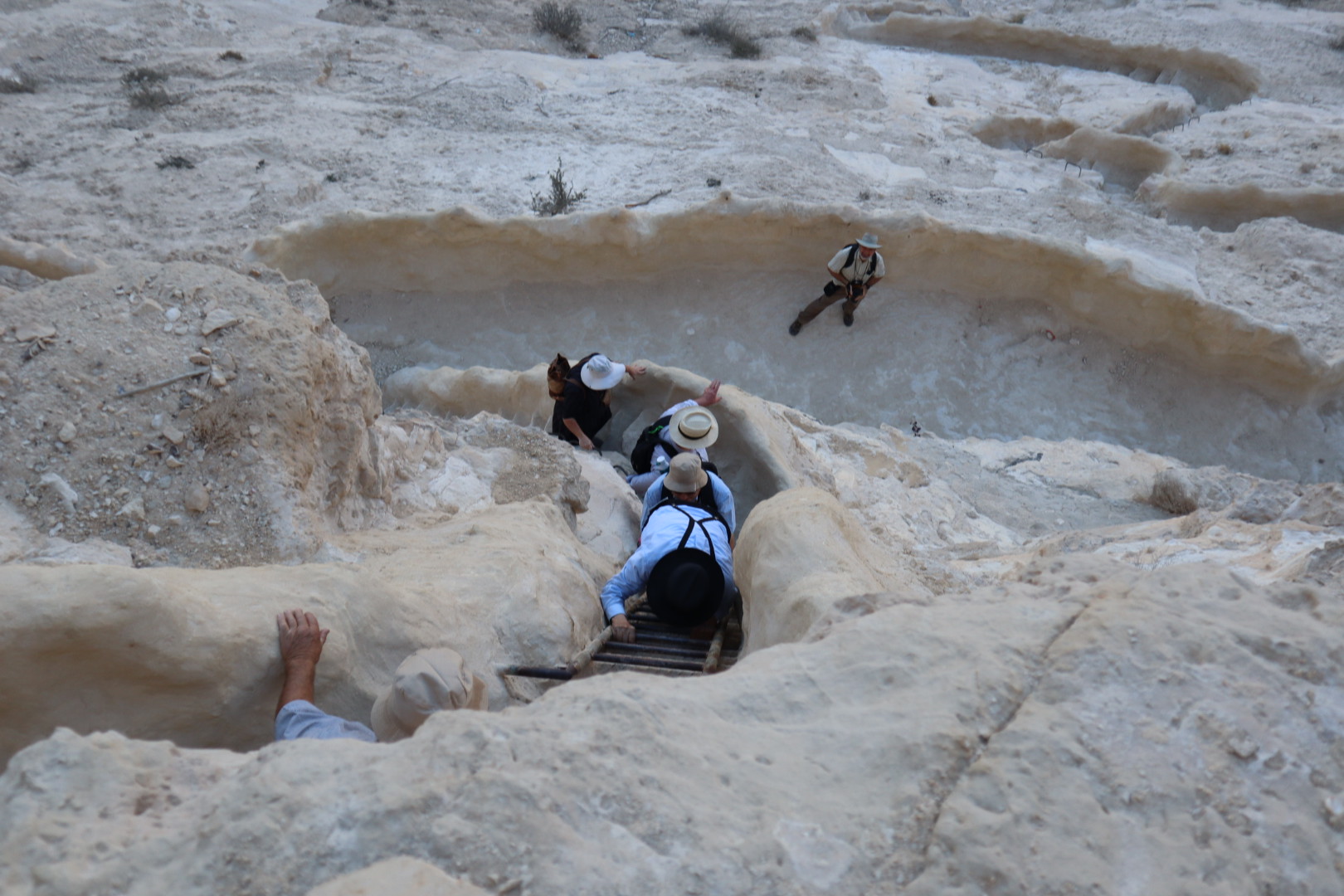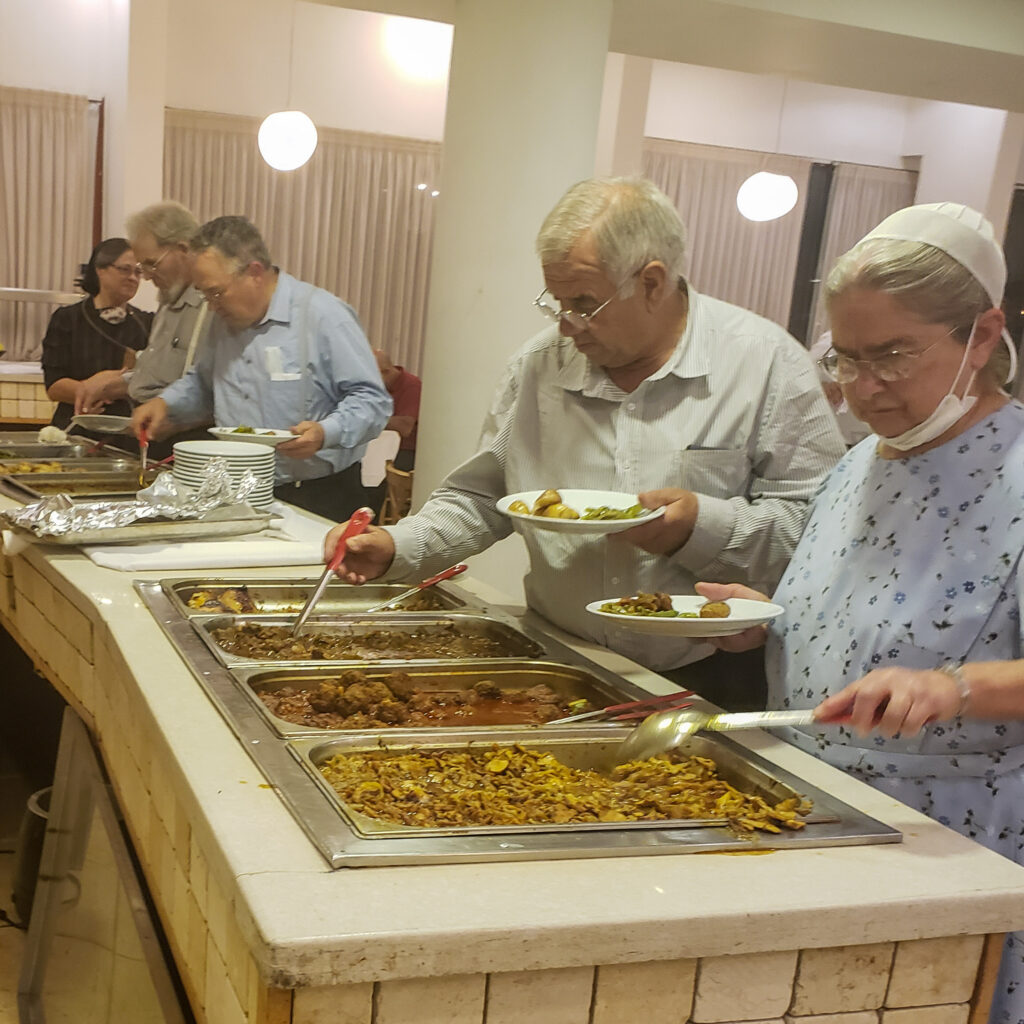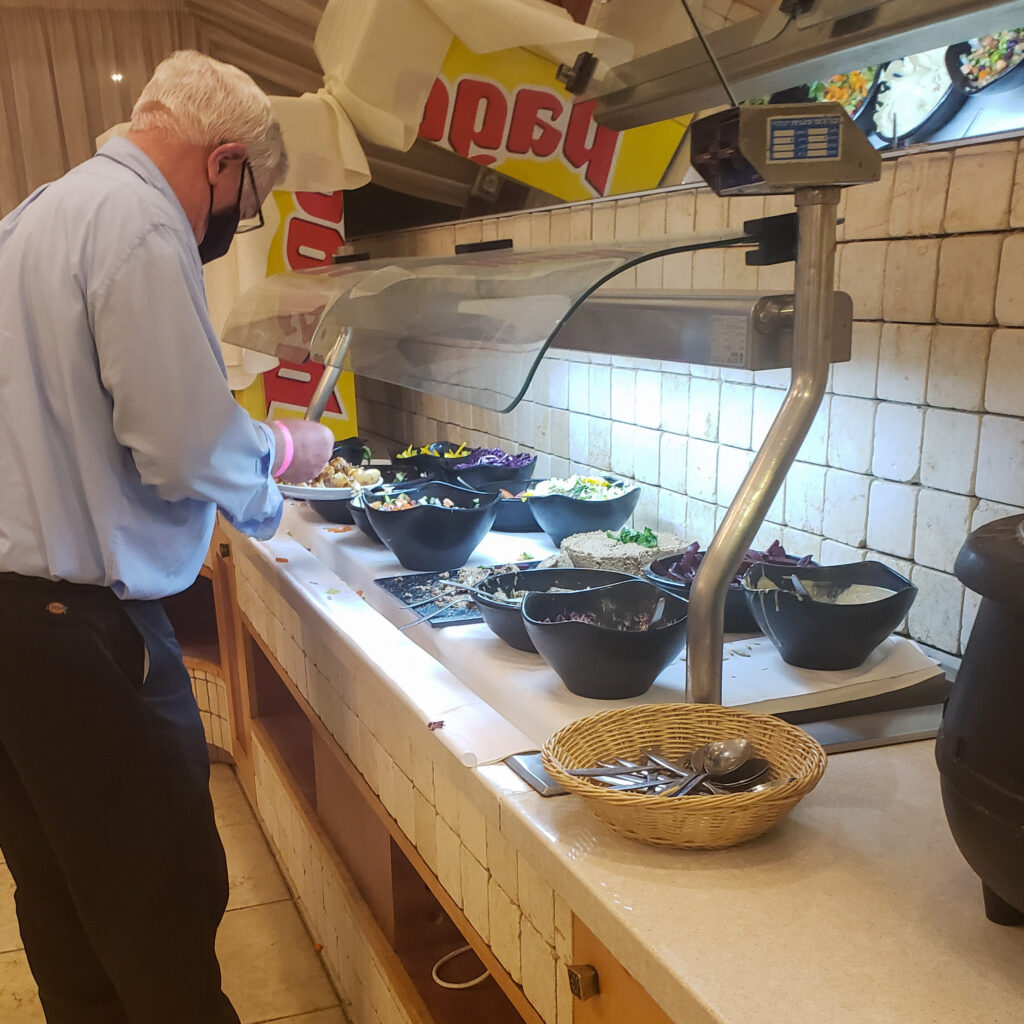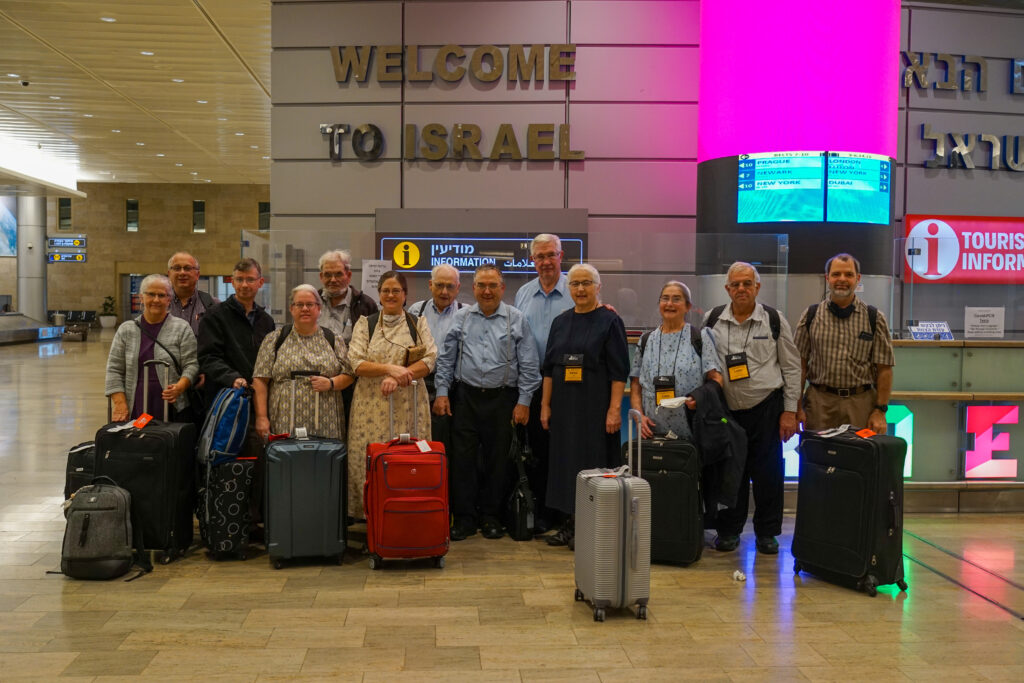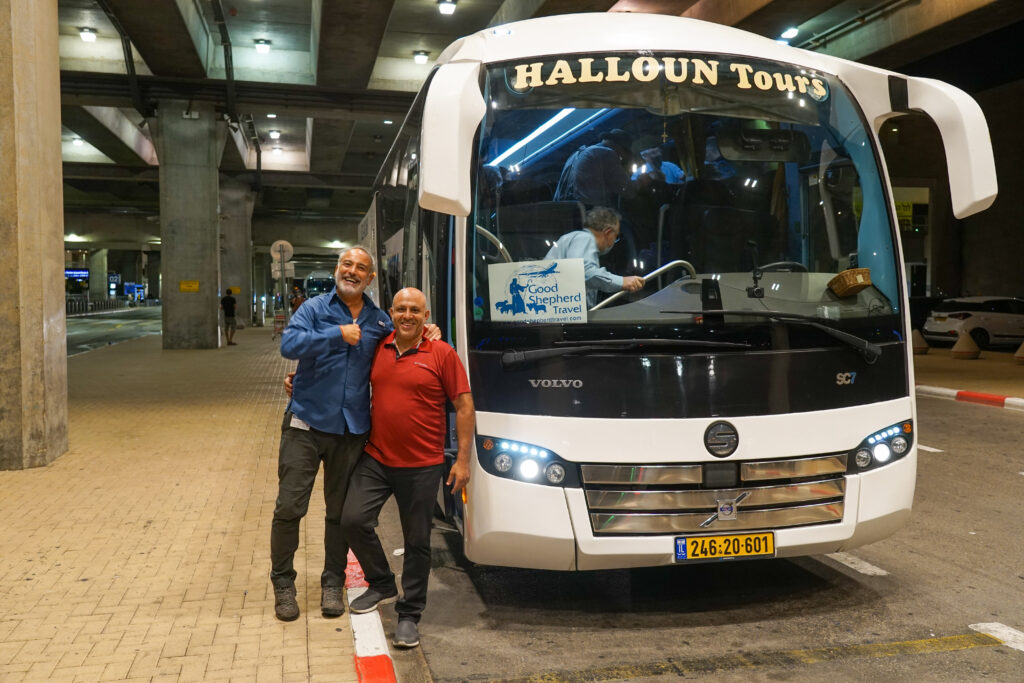Friday was a long day, and packed full of interest and inspiration. The first thing this morning we had our PCR Covid tests done in preparation for flying home on Sunday night. We were relieved when within a few hours they all came back negative. Praise the Lord!
Then we went to the Mount of Olives overlooking the city of Jerusalem. The golden Dome of the Rock was right in front of us across the Kidron valley.
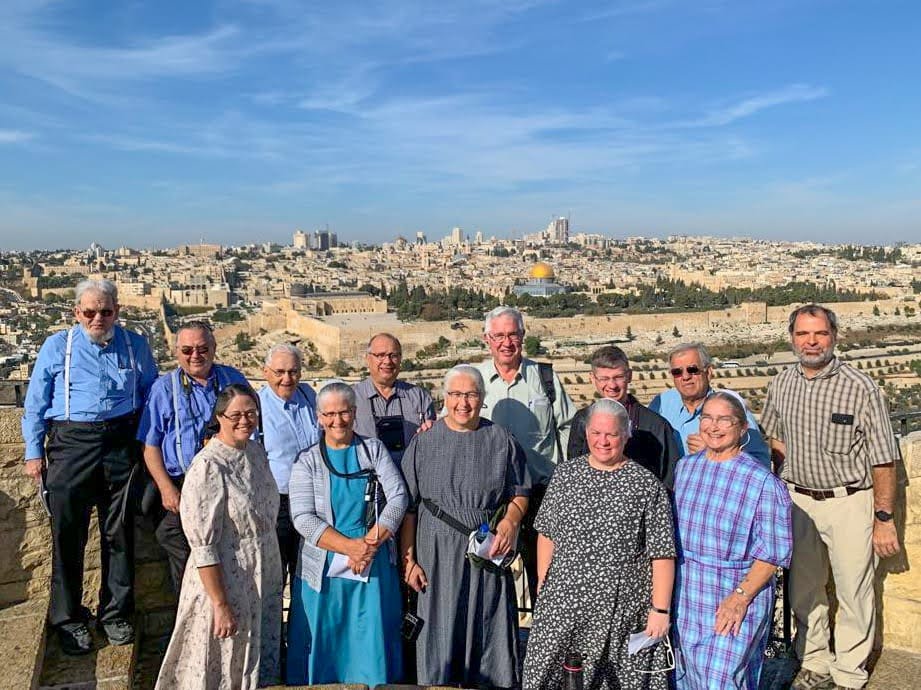



Jerusalem is a city of stone. Above left is a picture of the city wall showing layers of stone as the wall was rebuilt multiple times over the centuries. Next is a picture of the sealed-up Golden Gate on the east wall of the Temple Mount. The picture on the right is a close-up of Herodian stone. Notice the frame chiseled around the edge of the stone. This is typical of Herod’s stonework.
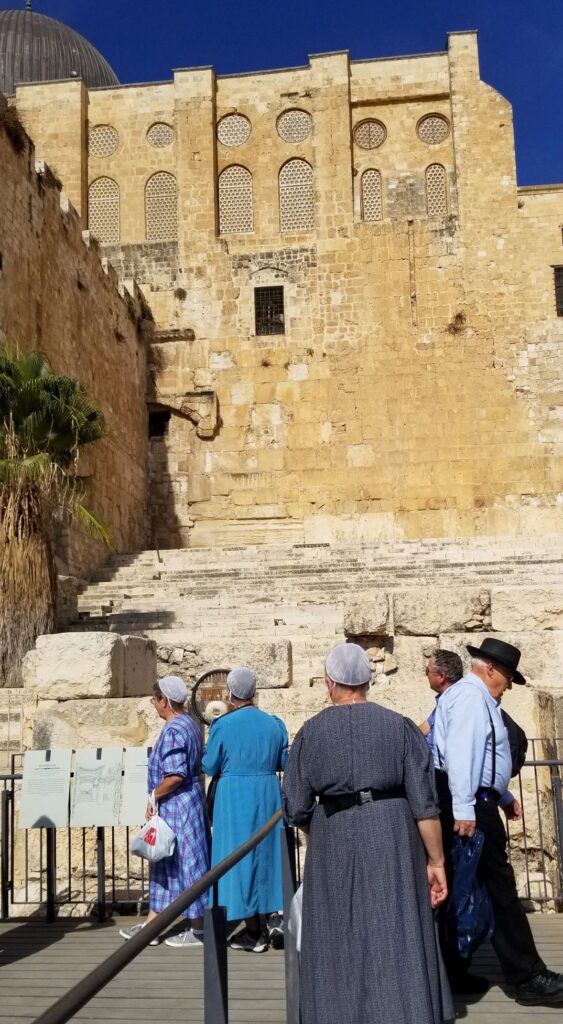
We sat awhile at the Southern Steps. The lower steps are original from the Second Temple era, so we sat and walked where Jesus went up into the temple. We read about the outpouring of the Holy Spirit, which some theologians believe may have happened somewhere here in the vicinity of the temple. The remains of at least 50 ritual baths in front of us showed that there would have been plenty of room and plenty of water to baptize “about 3000 souls.”
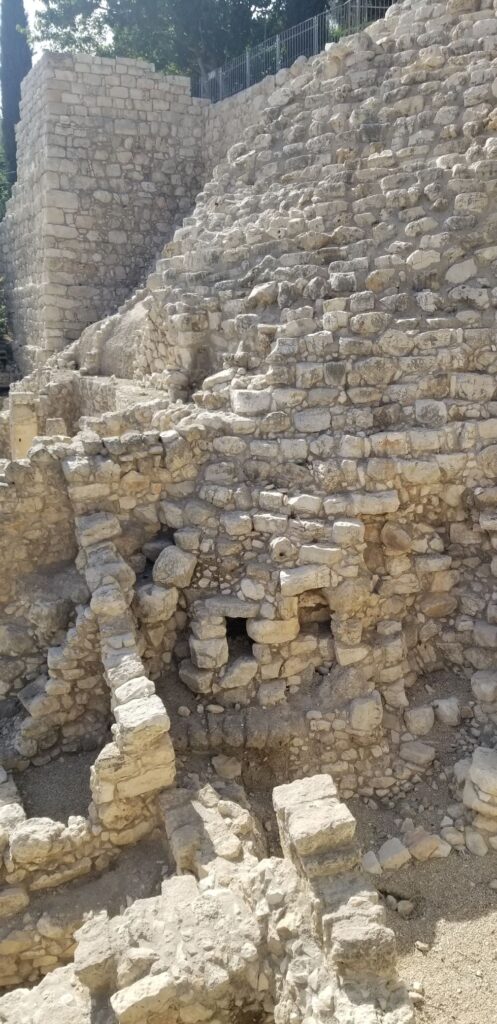




We visited the garden tomb. Whether this tomb or the Holy Sepulchre site are the actual place where Jesus was laid, one thing is the same about them–they’re both empty! It was a beautiful day to sit in the garden and sing about the Resurrection.
A great highlight of the day was walking through Hezekiah’s tunnel. Our guide strongly advised putting our phones safely away, since if we dropped them they would be gone! Since I already dropped my phone at least twice on this trip, I decided to follow this advice, therefore I have no pictures. The water was clear and somewhat cold, and fun to walk through. Some of us found the tunnel uncomfortably narrow and low at spots, but we all made it through. It was amazing to look at the chisel marks in those ancient stone walls and think of the people who formed them long ago.
The evening was the best part of all. We spent the evening with an Orthodox Jewish family, attending prayers with them, eating supper with them, and discussing many things. Our minds and hearts are full, and you might hear more about these things tomorrow…


A young man who came to Israel from Cleveland, Ohio, to study at the yeshiva and serve in the Israeli military. His wife is beside him, and the yeshiva behind him. We were allowed to go in and look at the large room where about 400 students gather to study. Each student has a section of the table, and you can see their vast collection of books, all about the Tanakh, our Old Testament.
